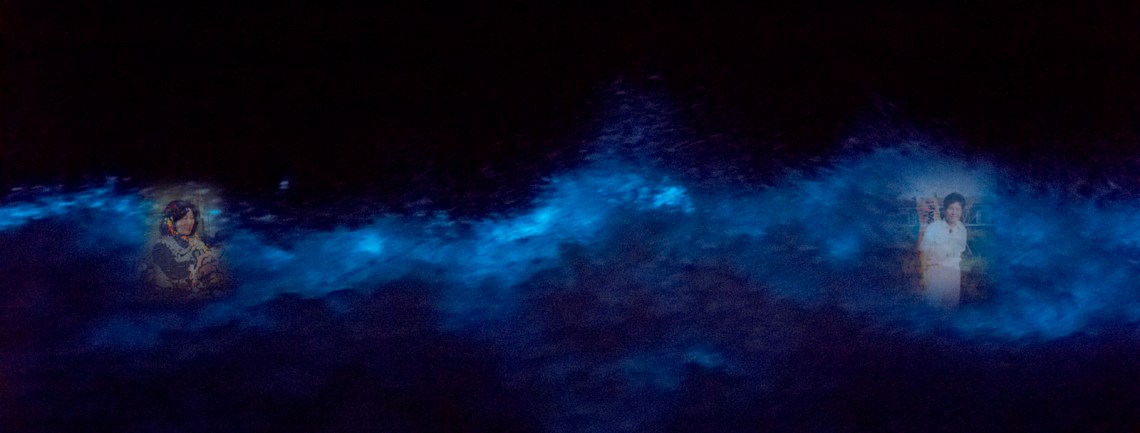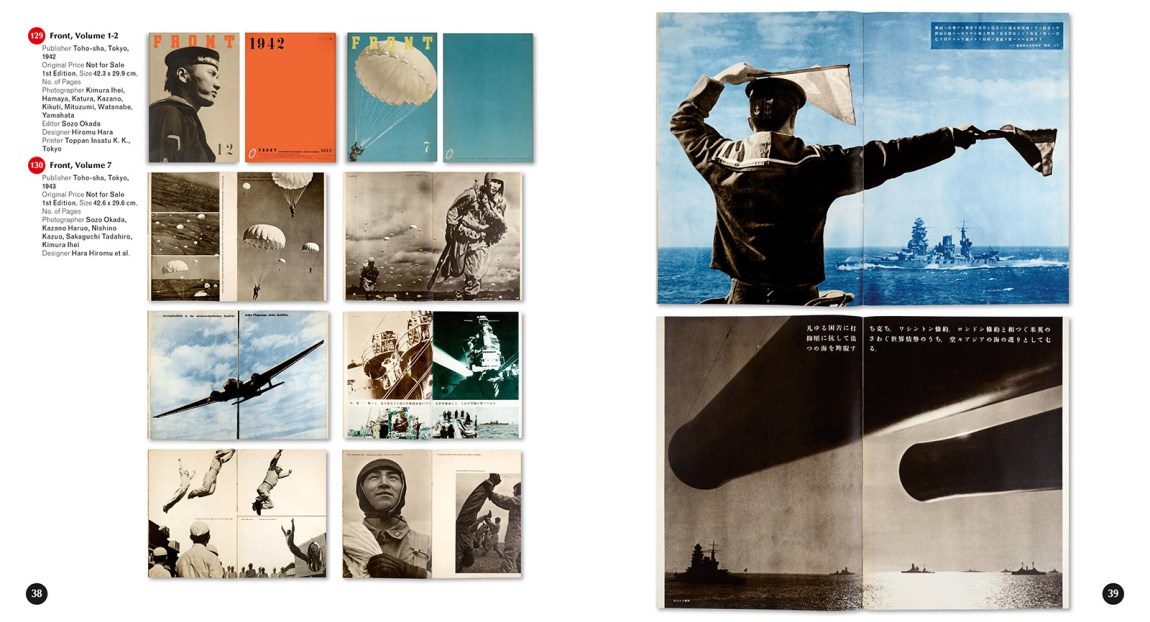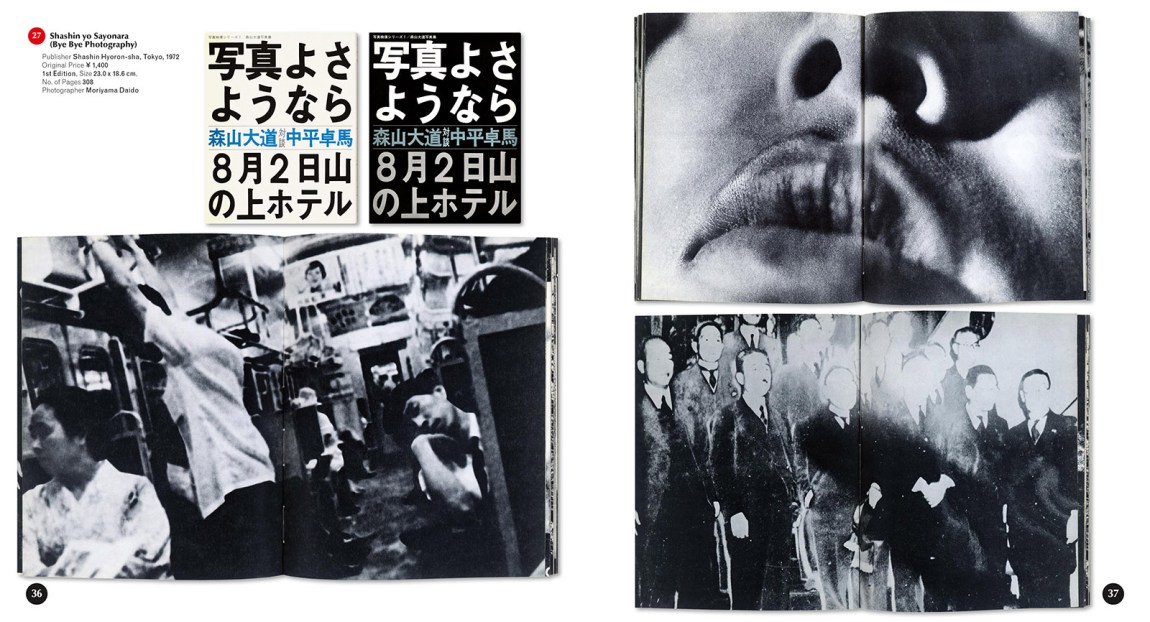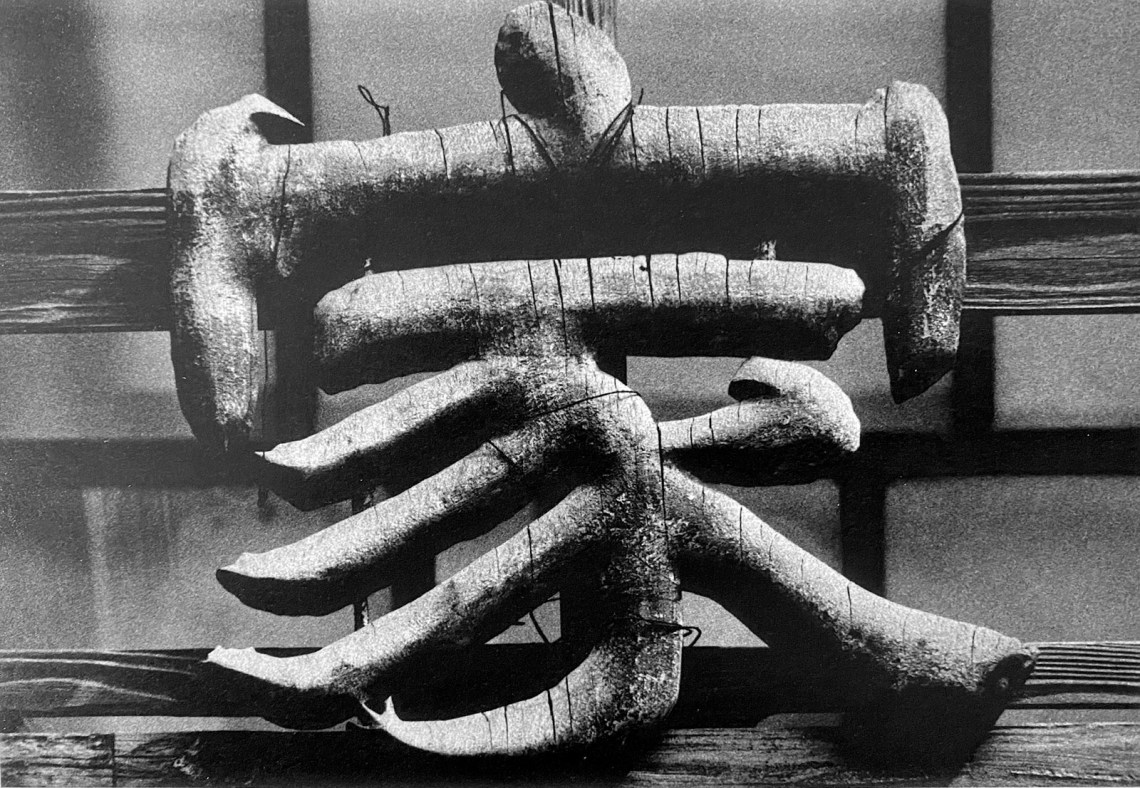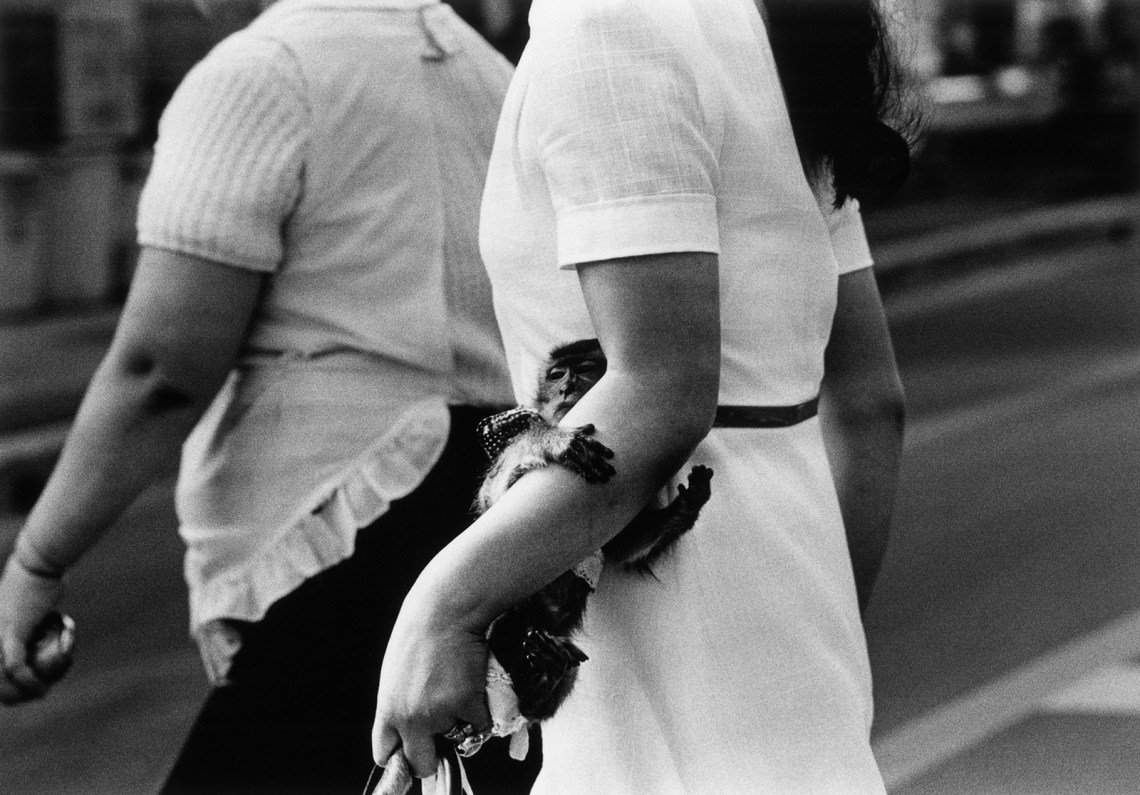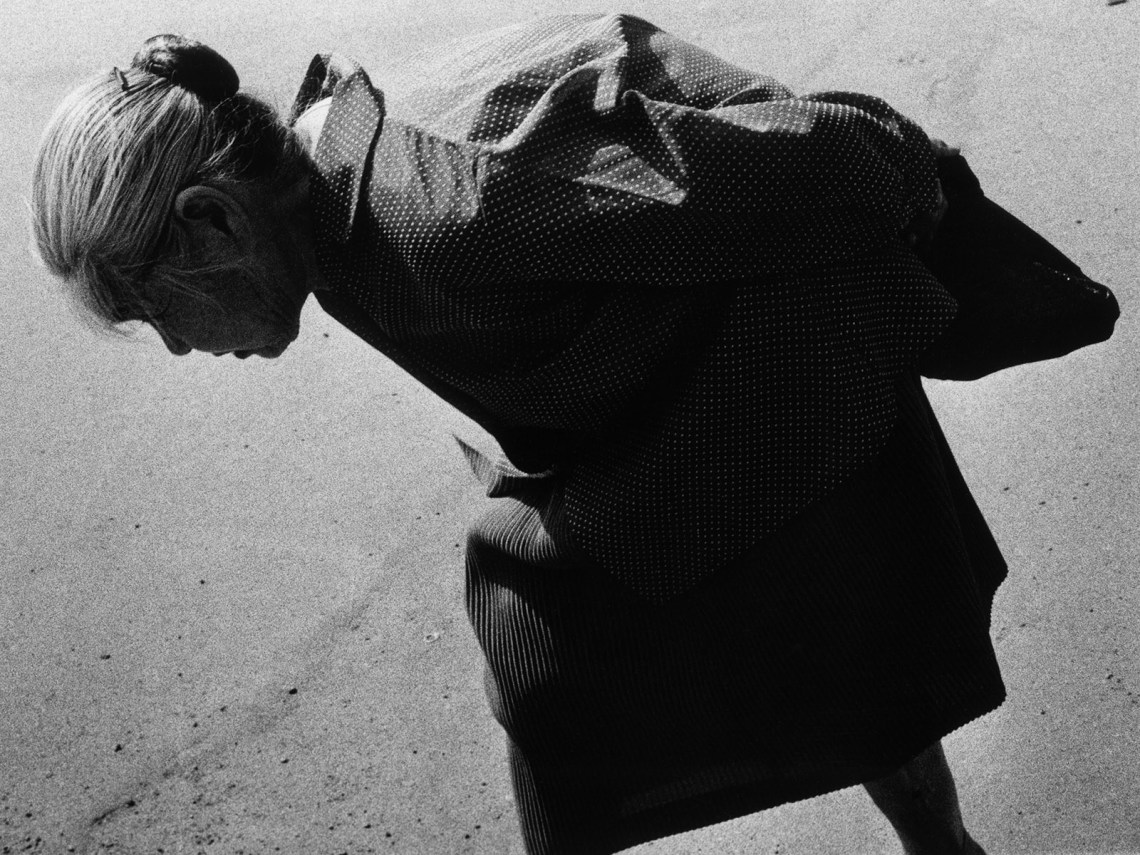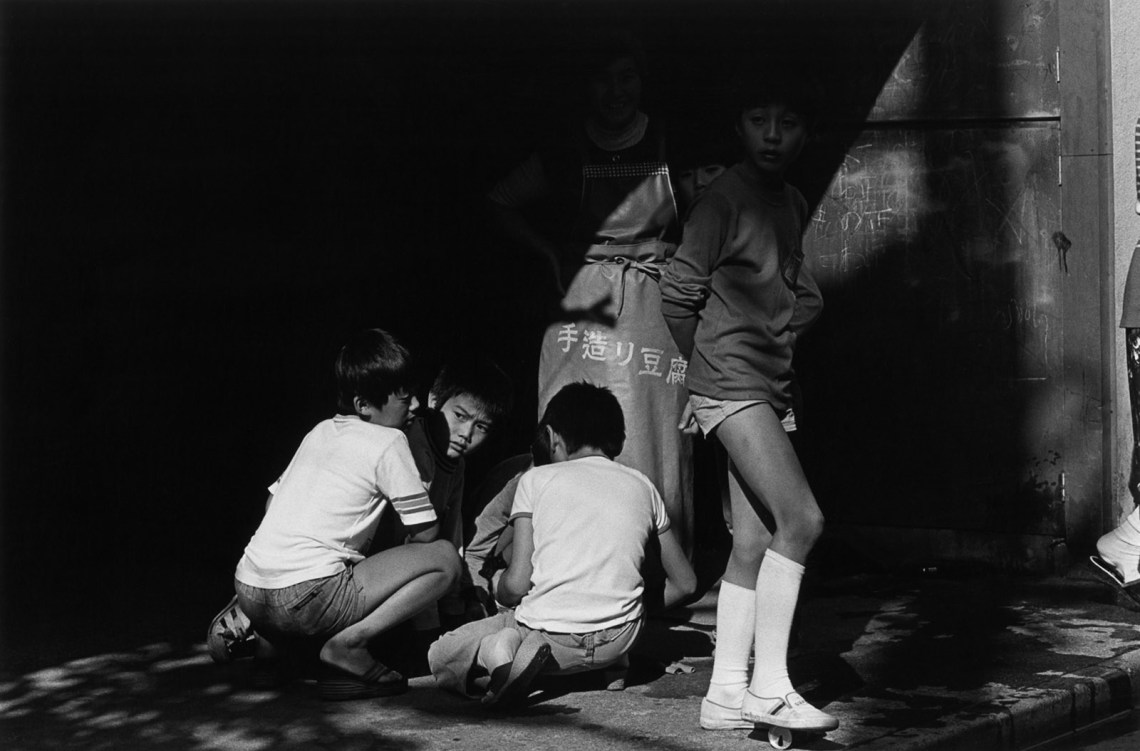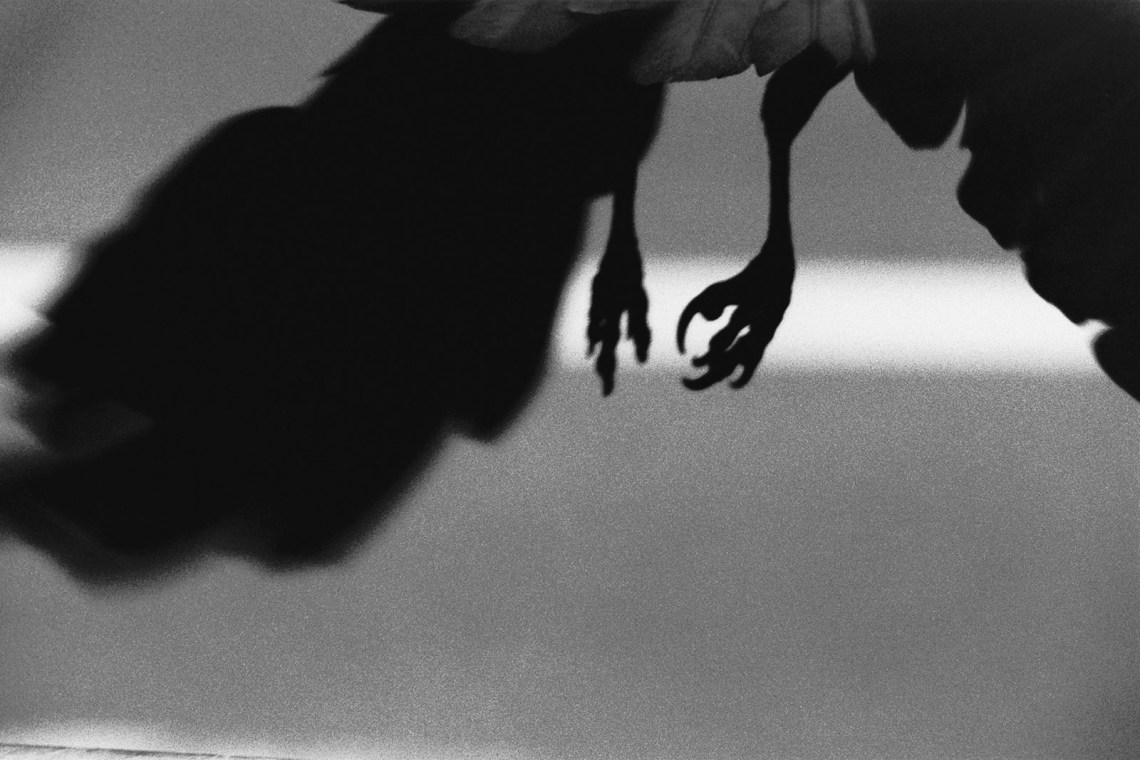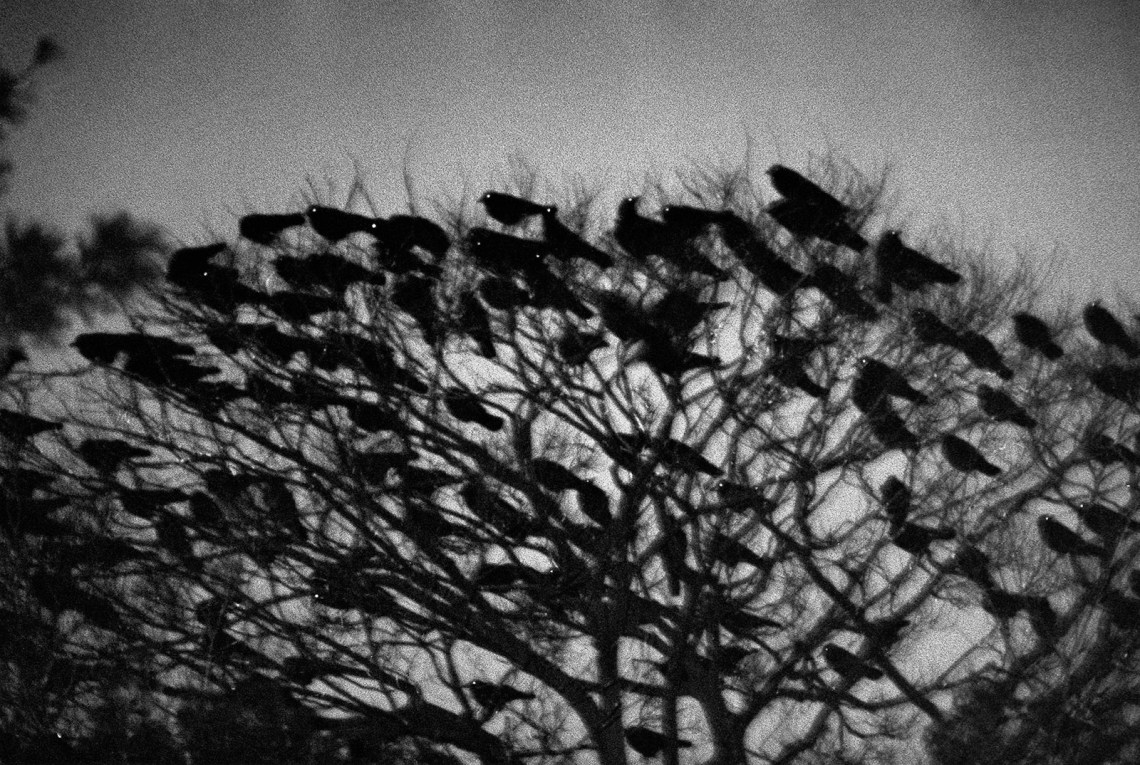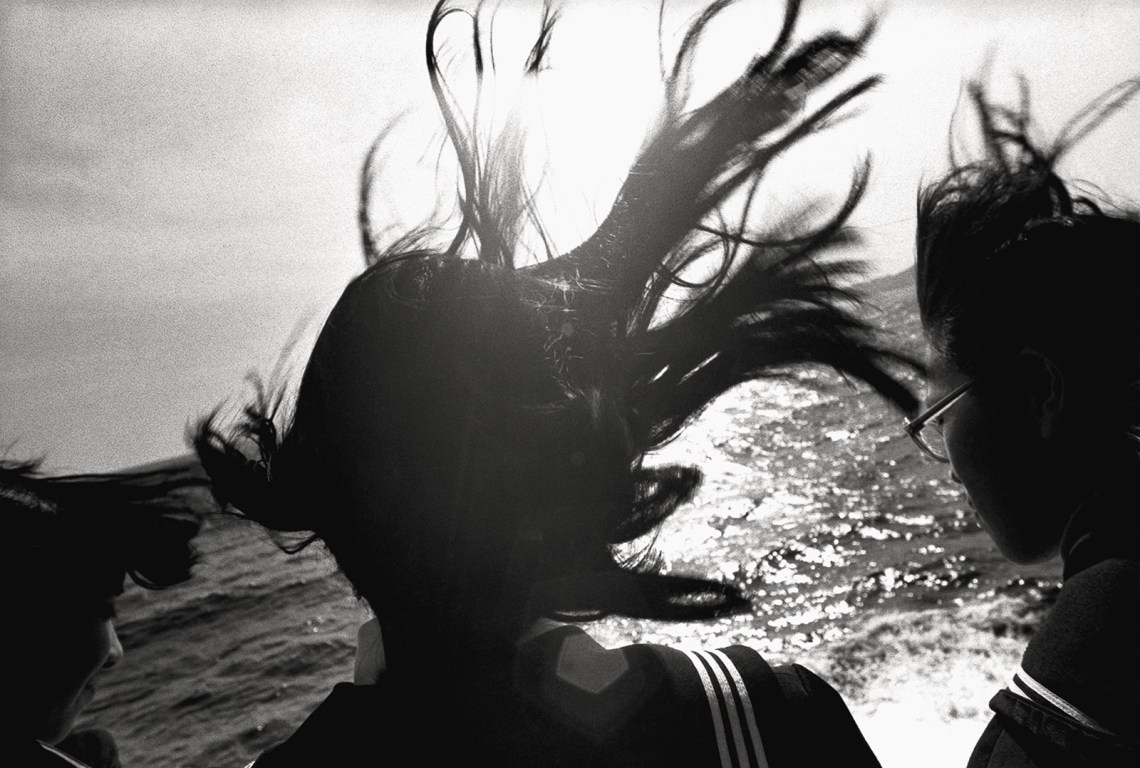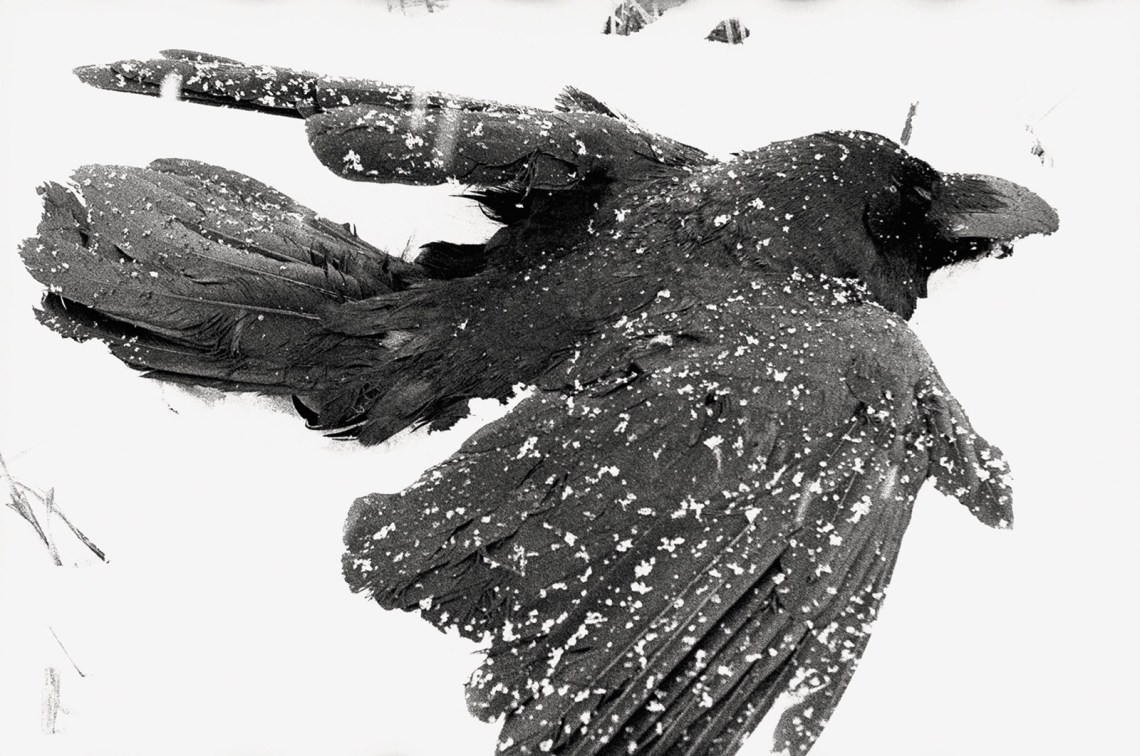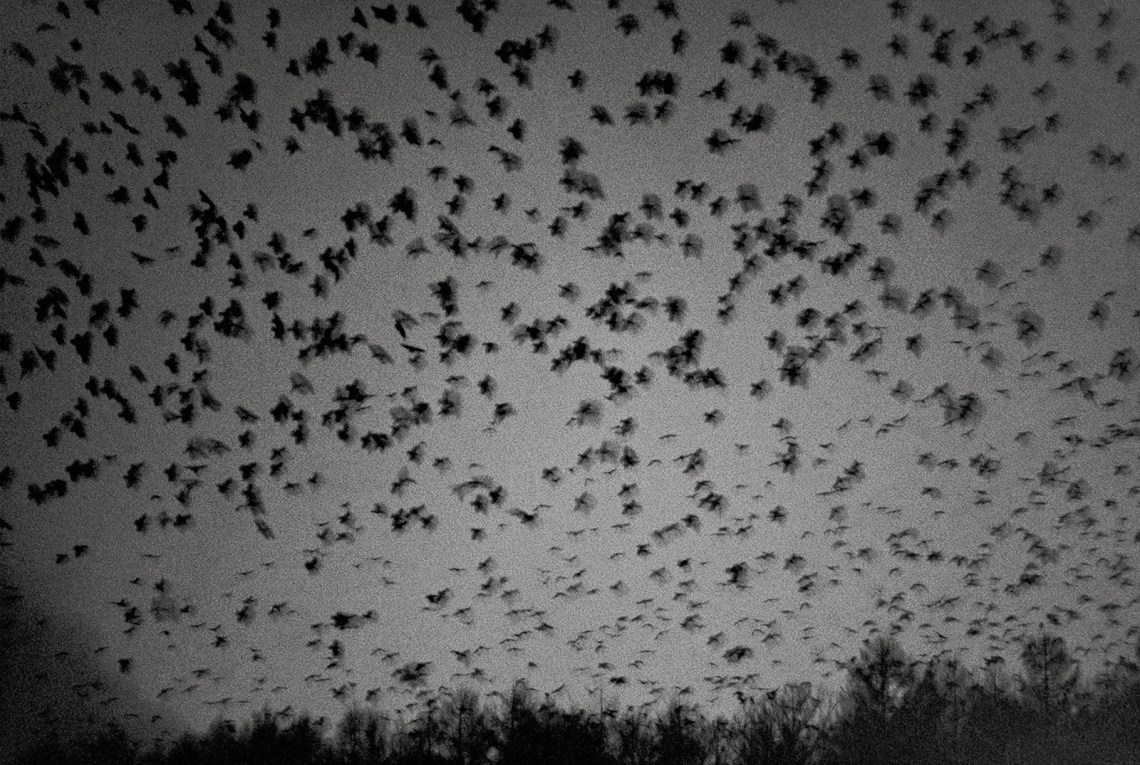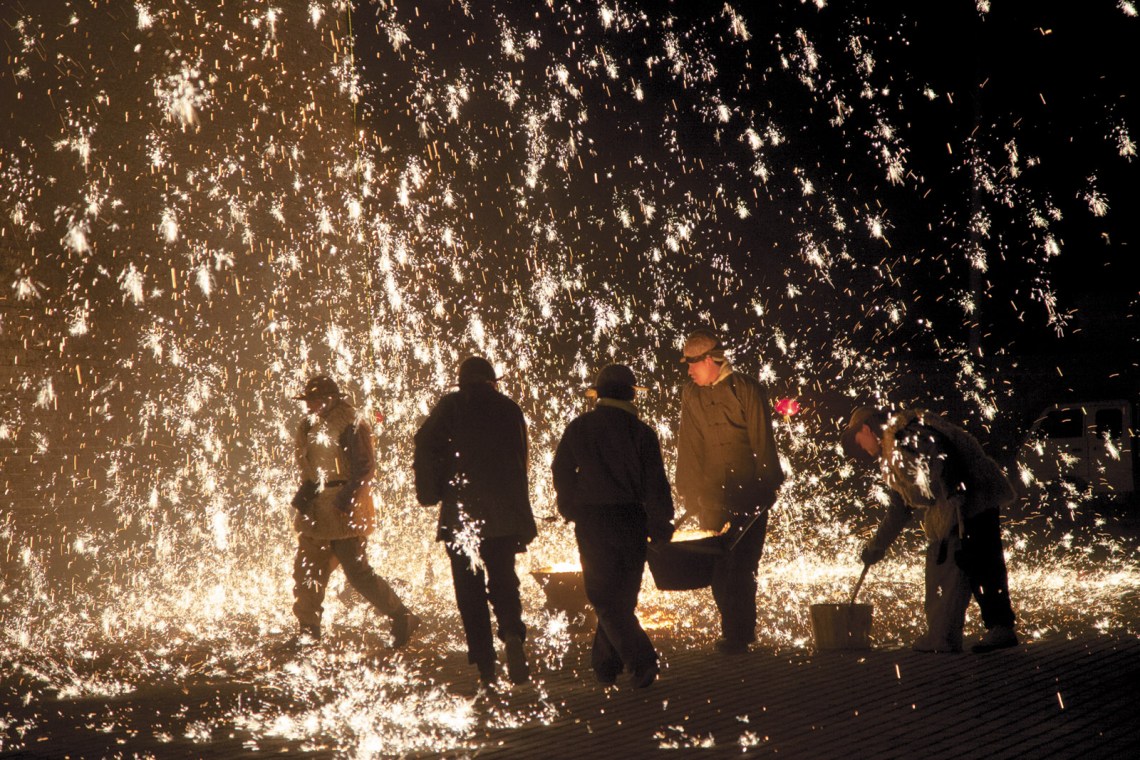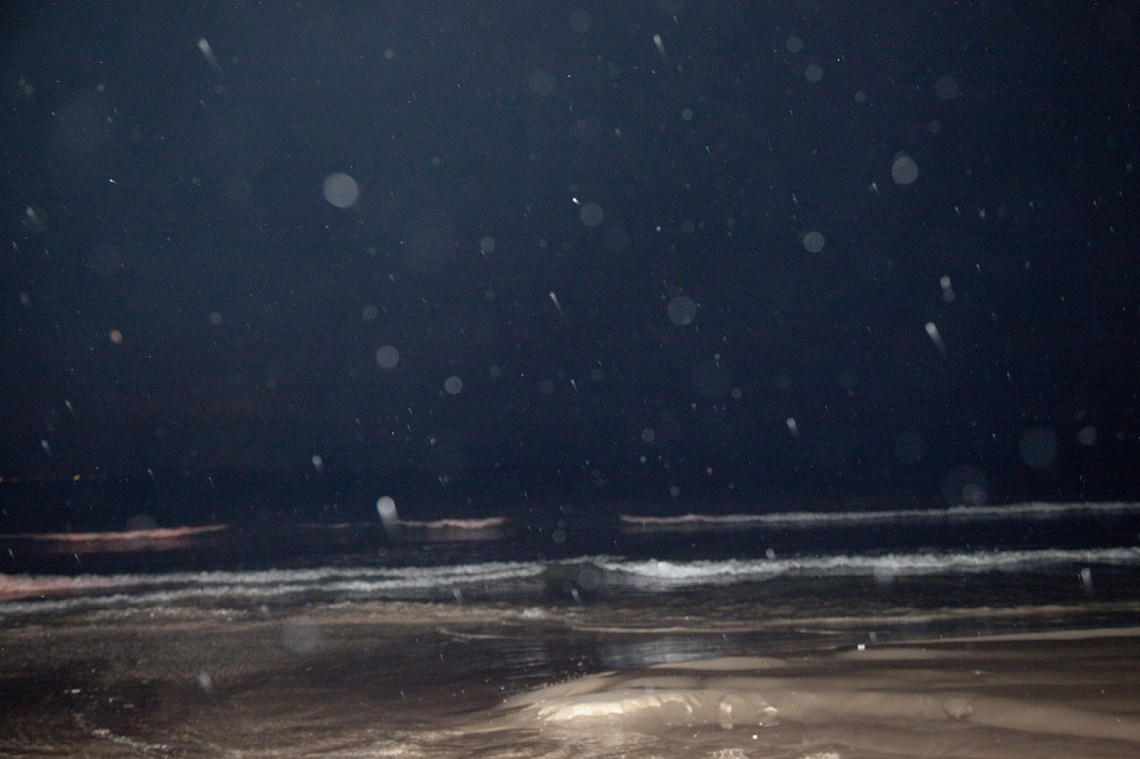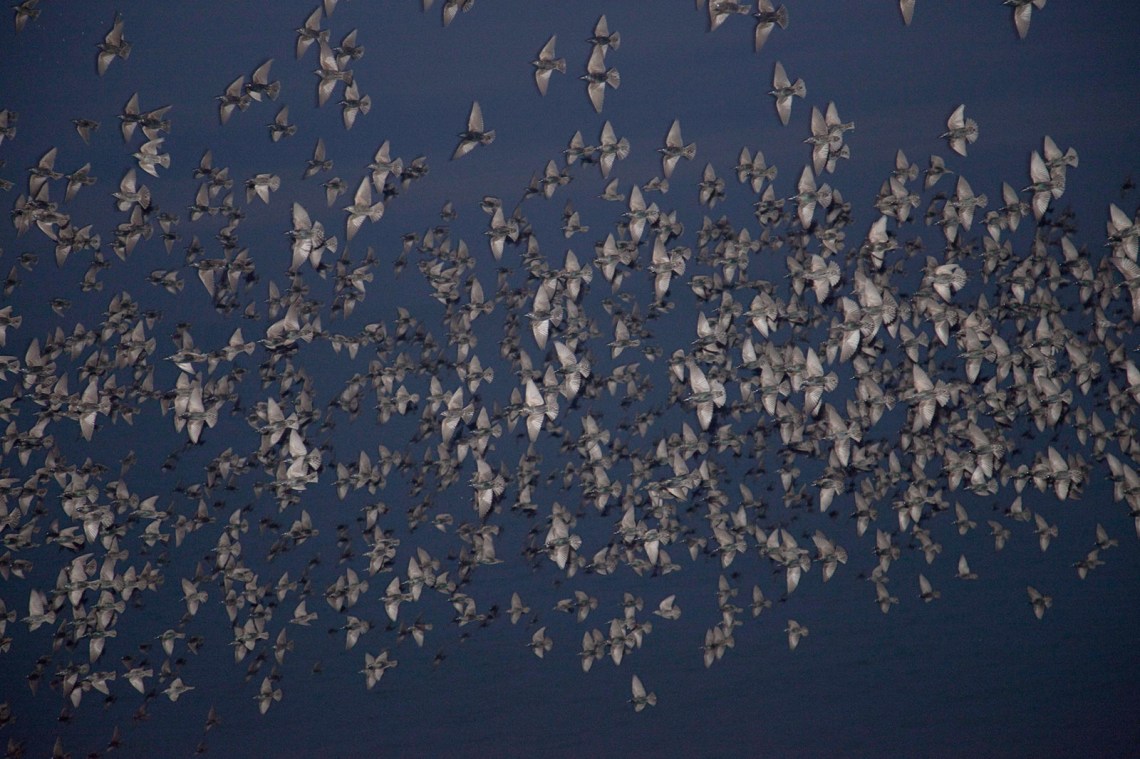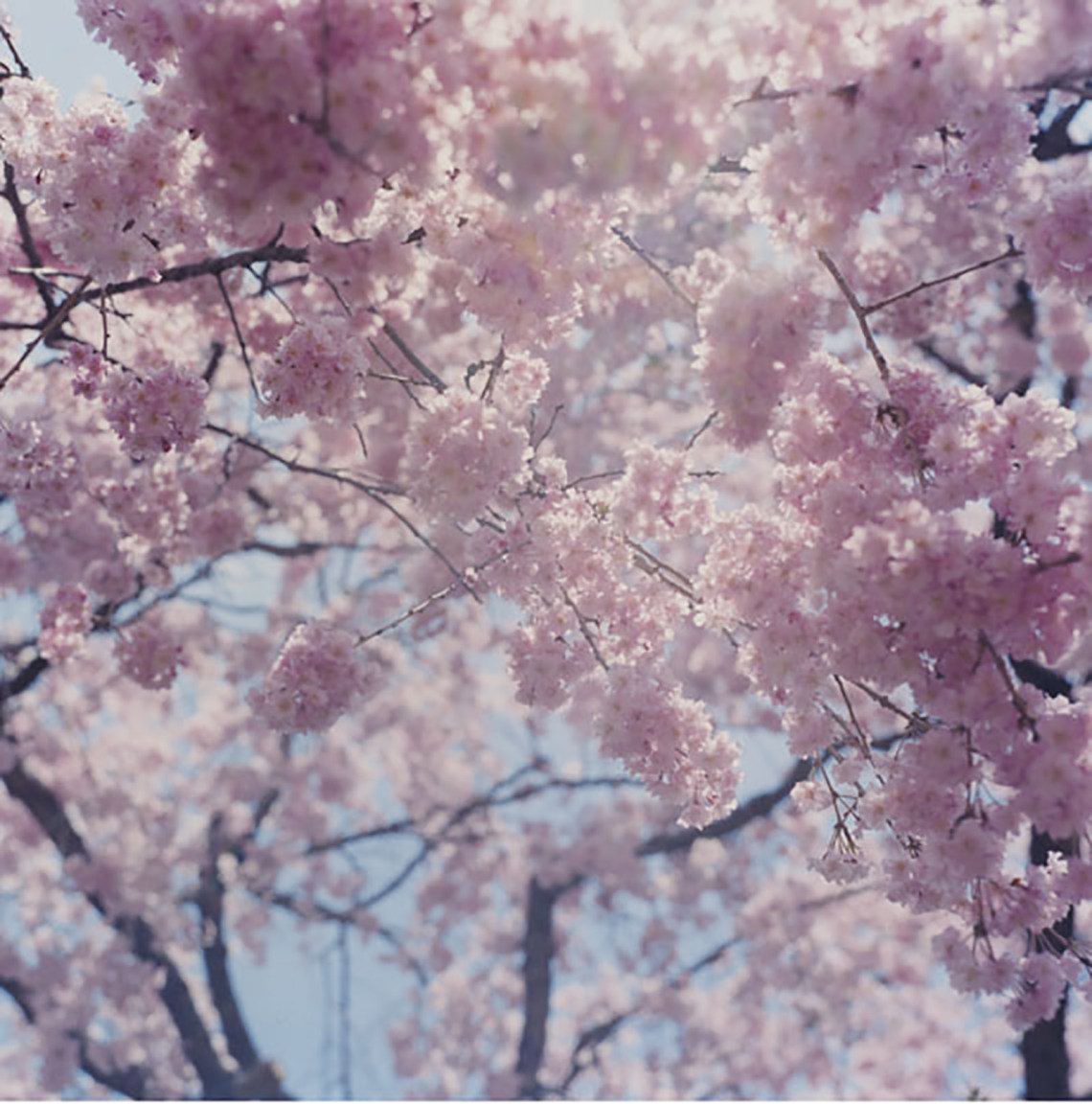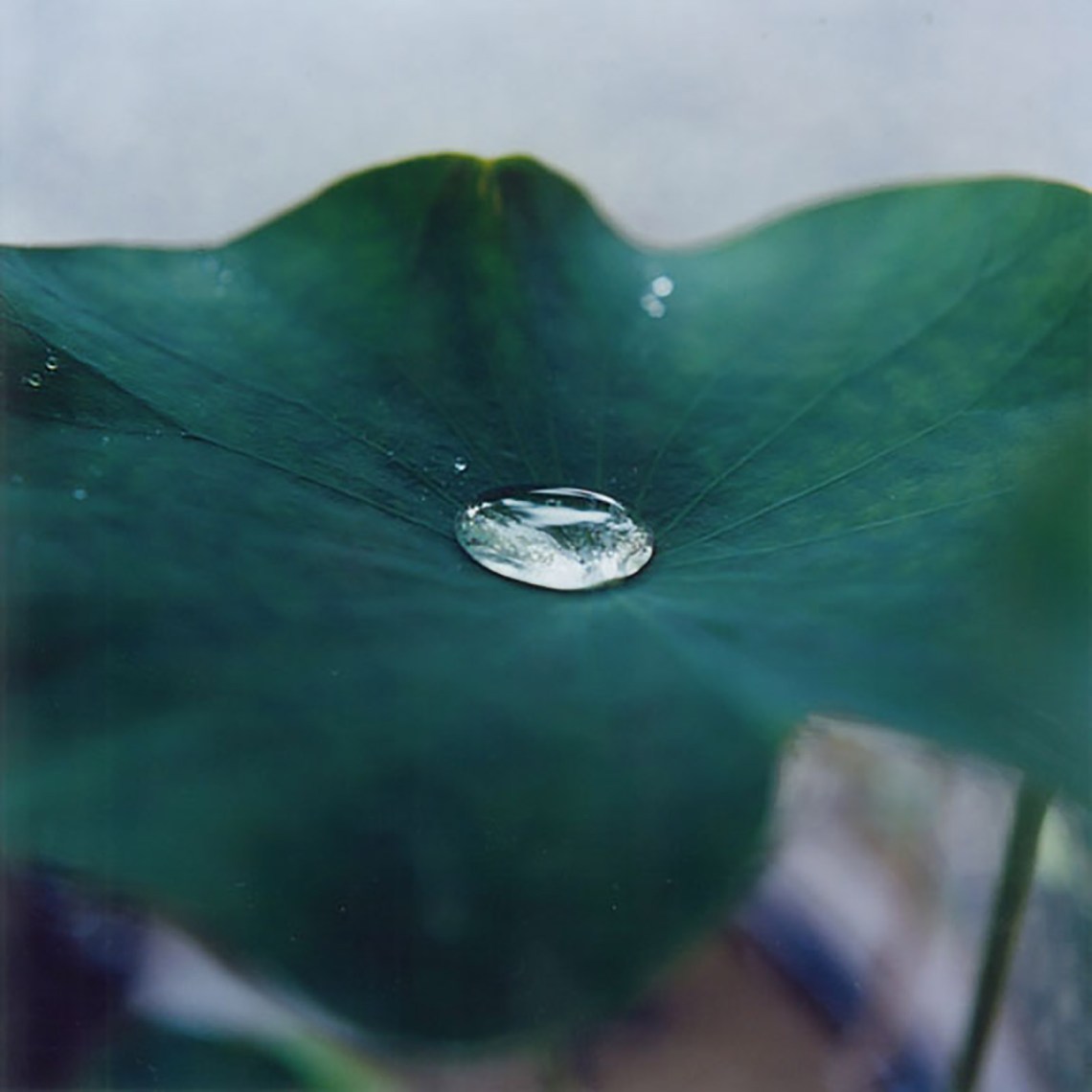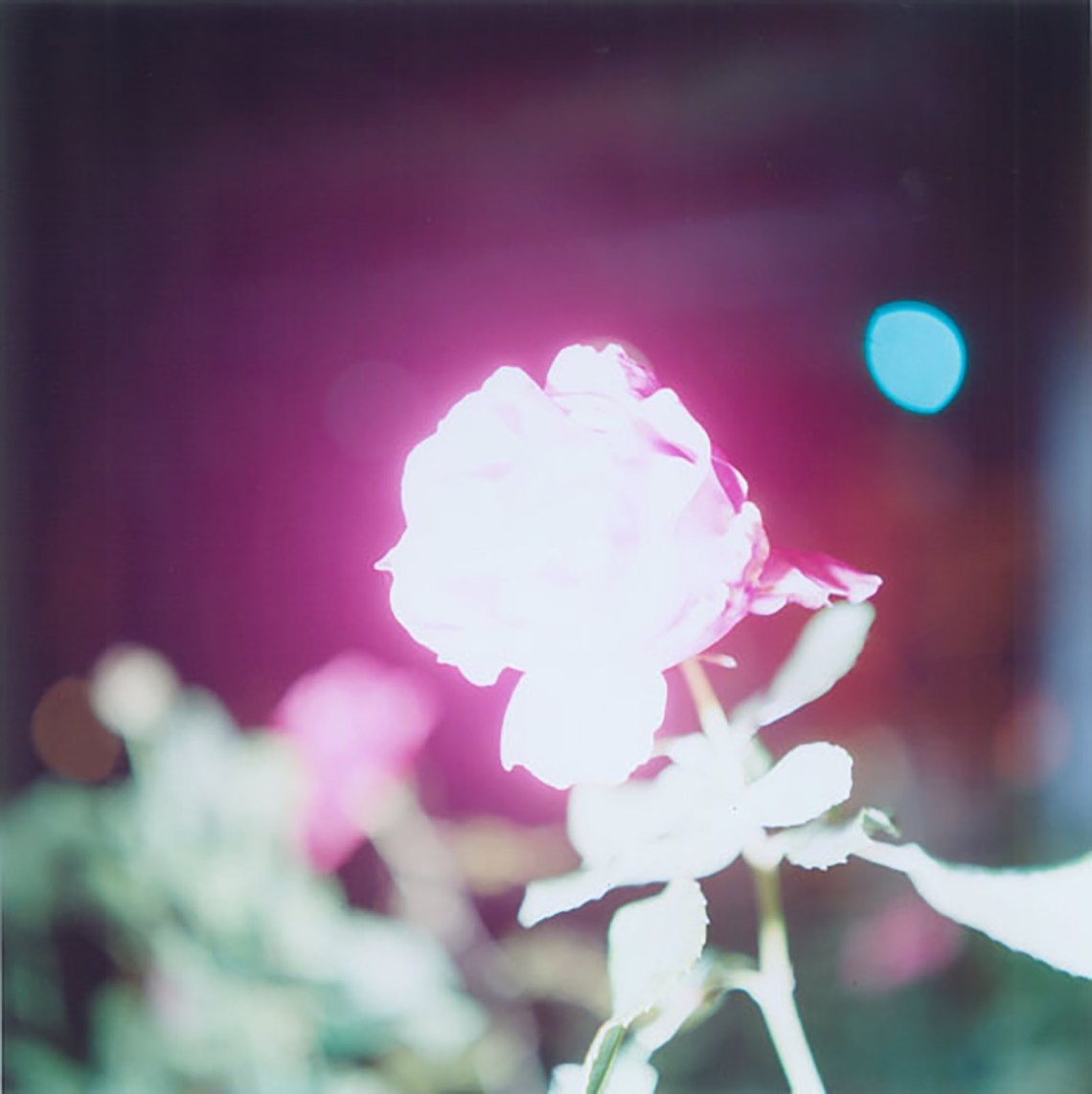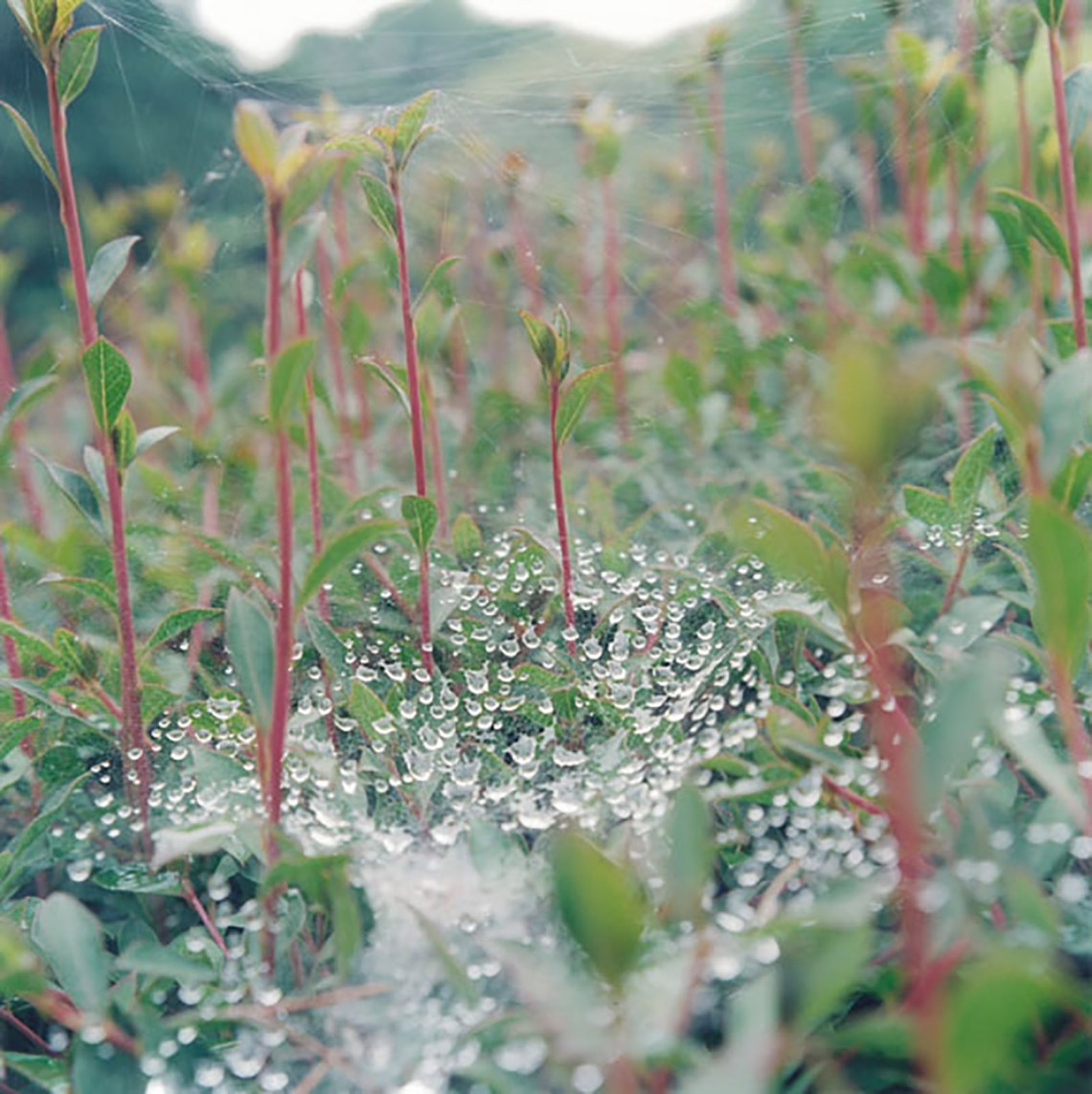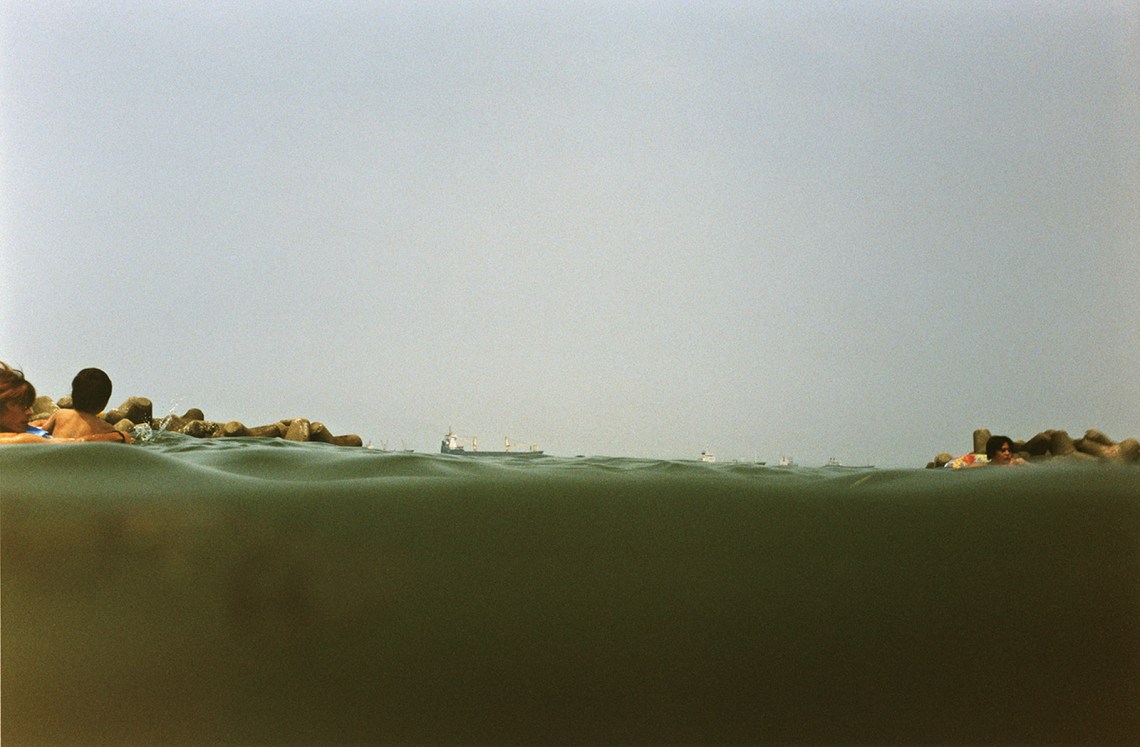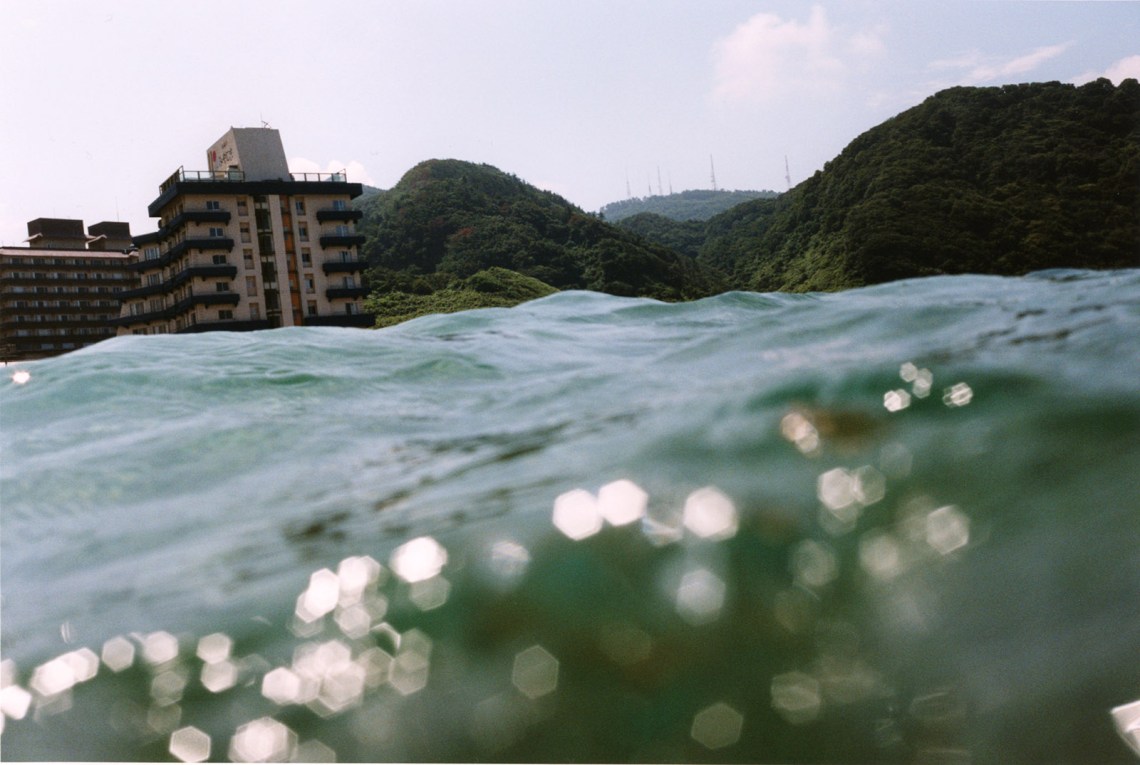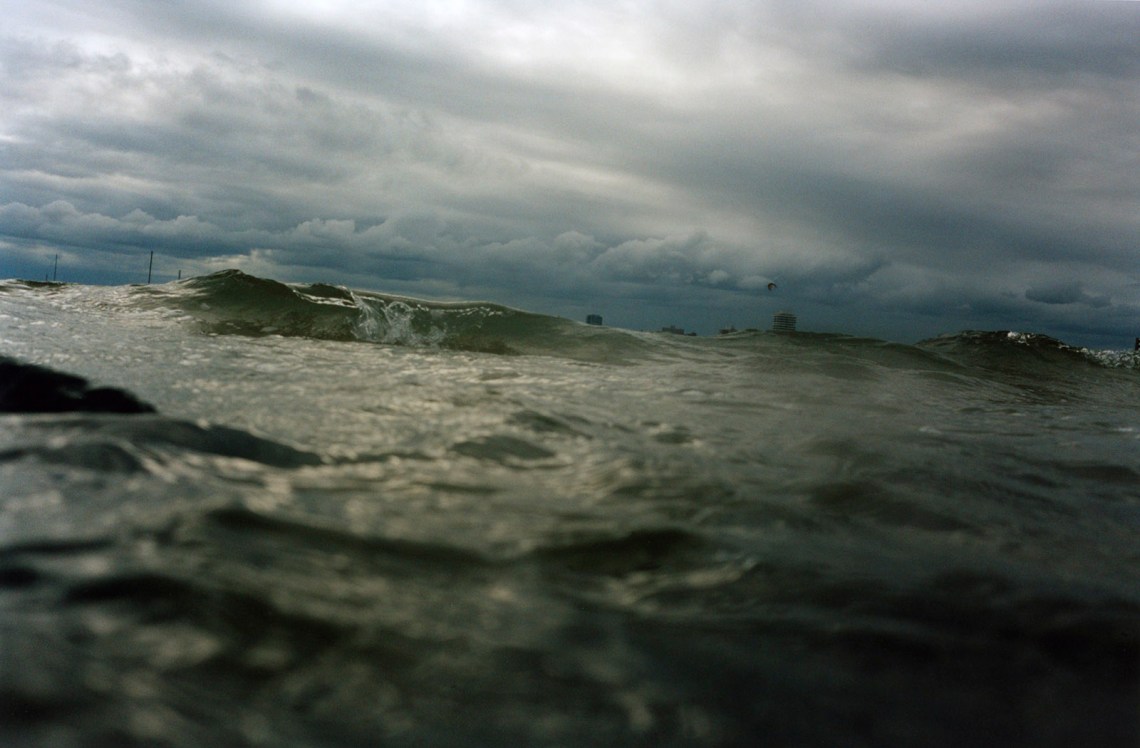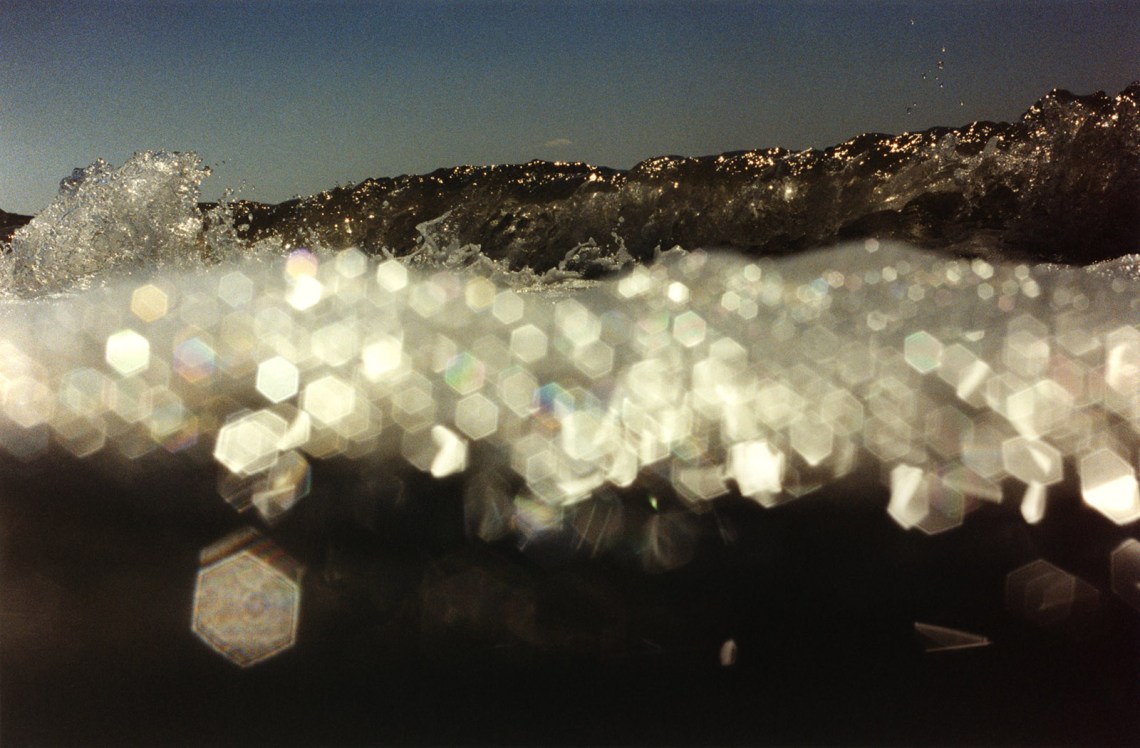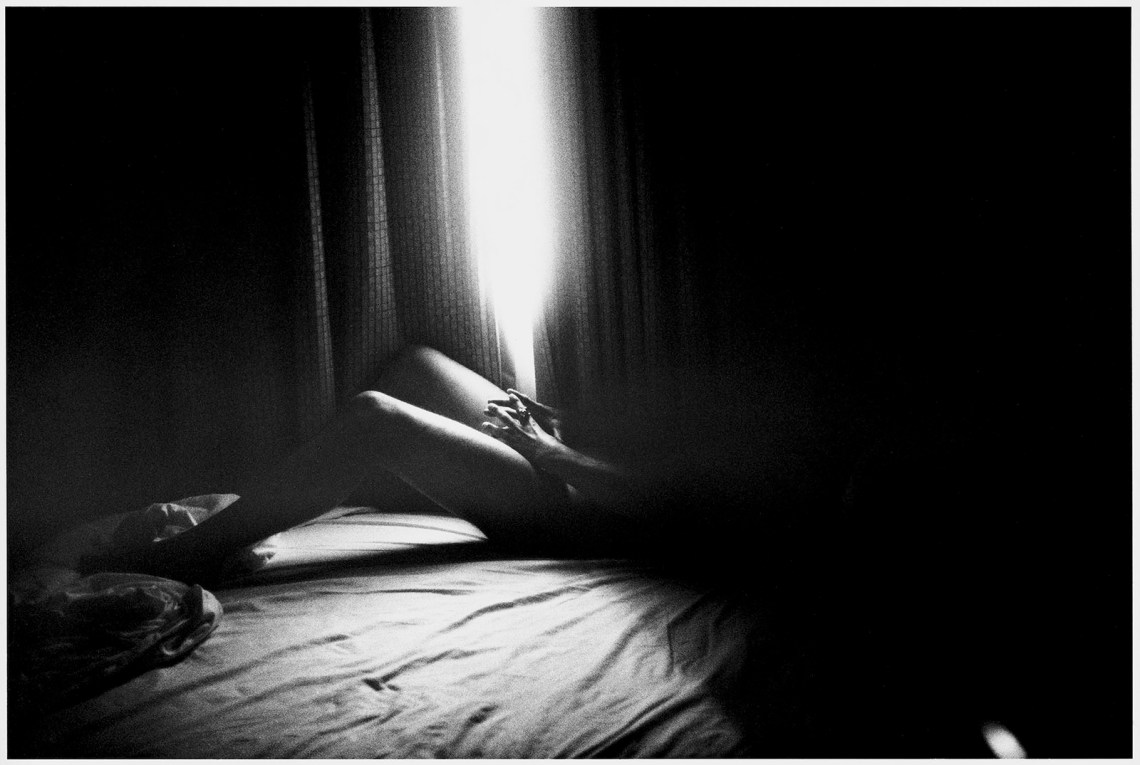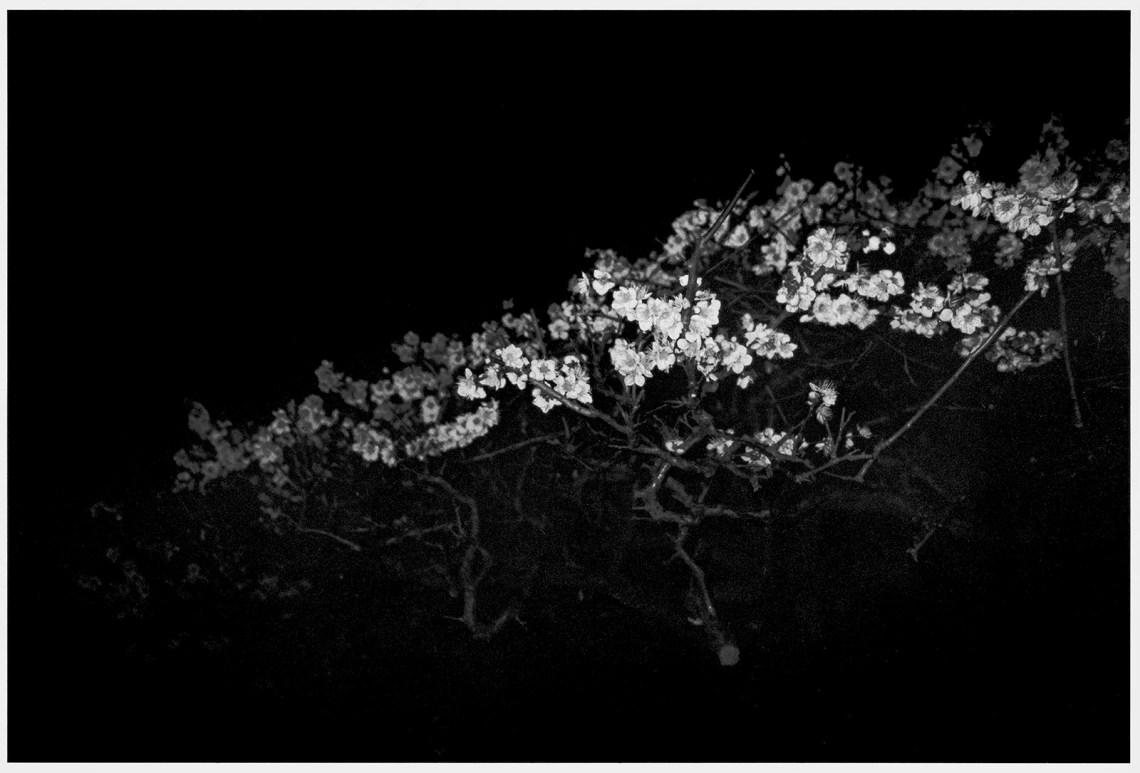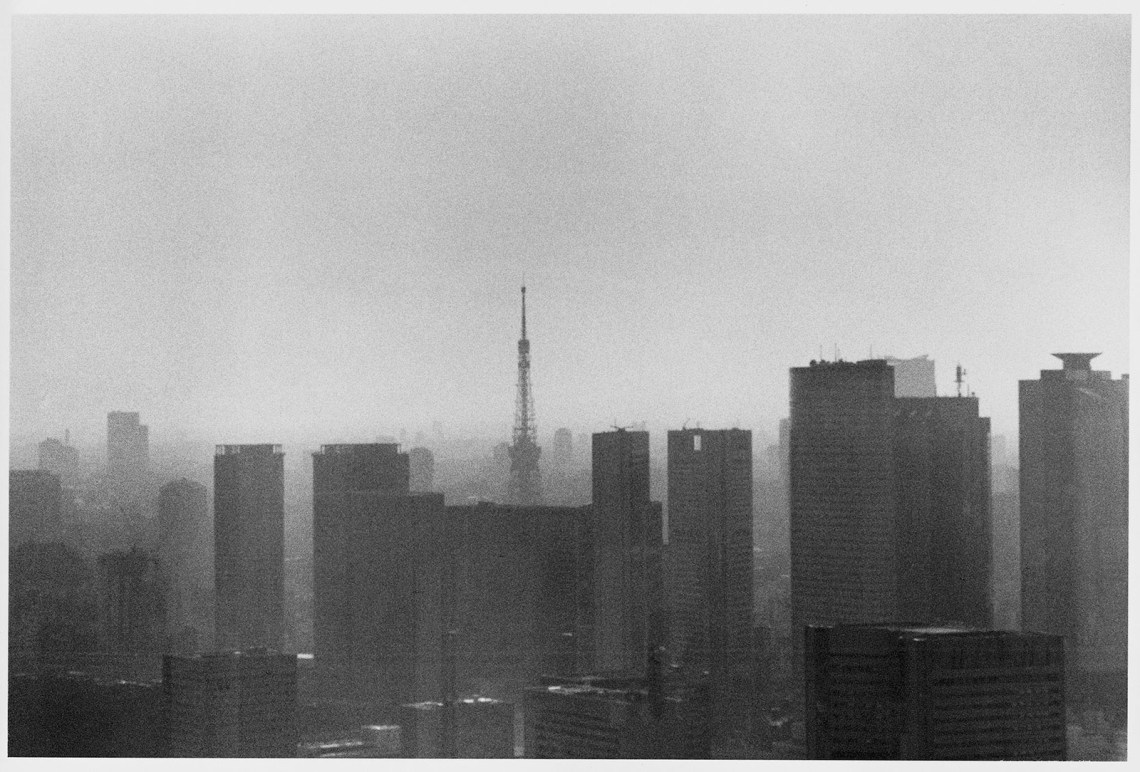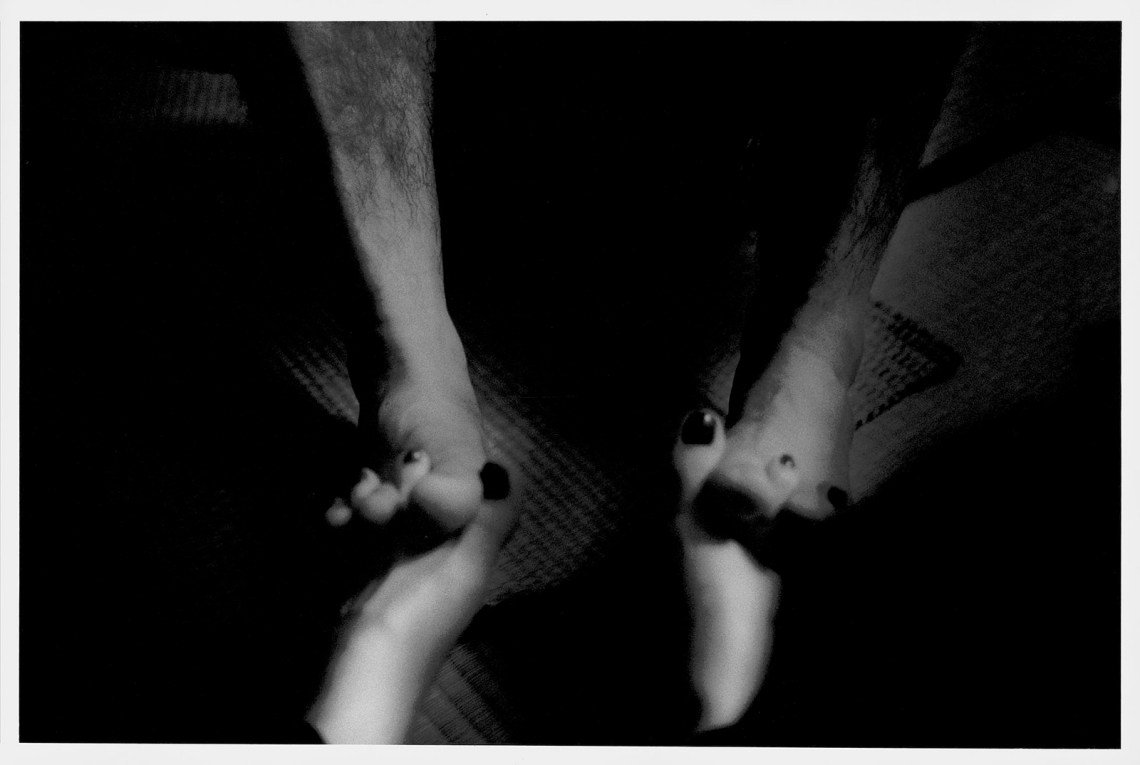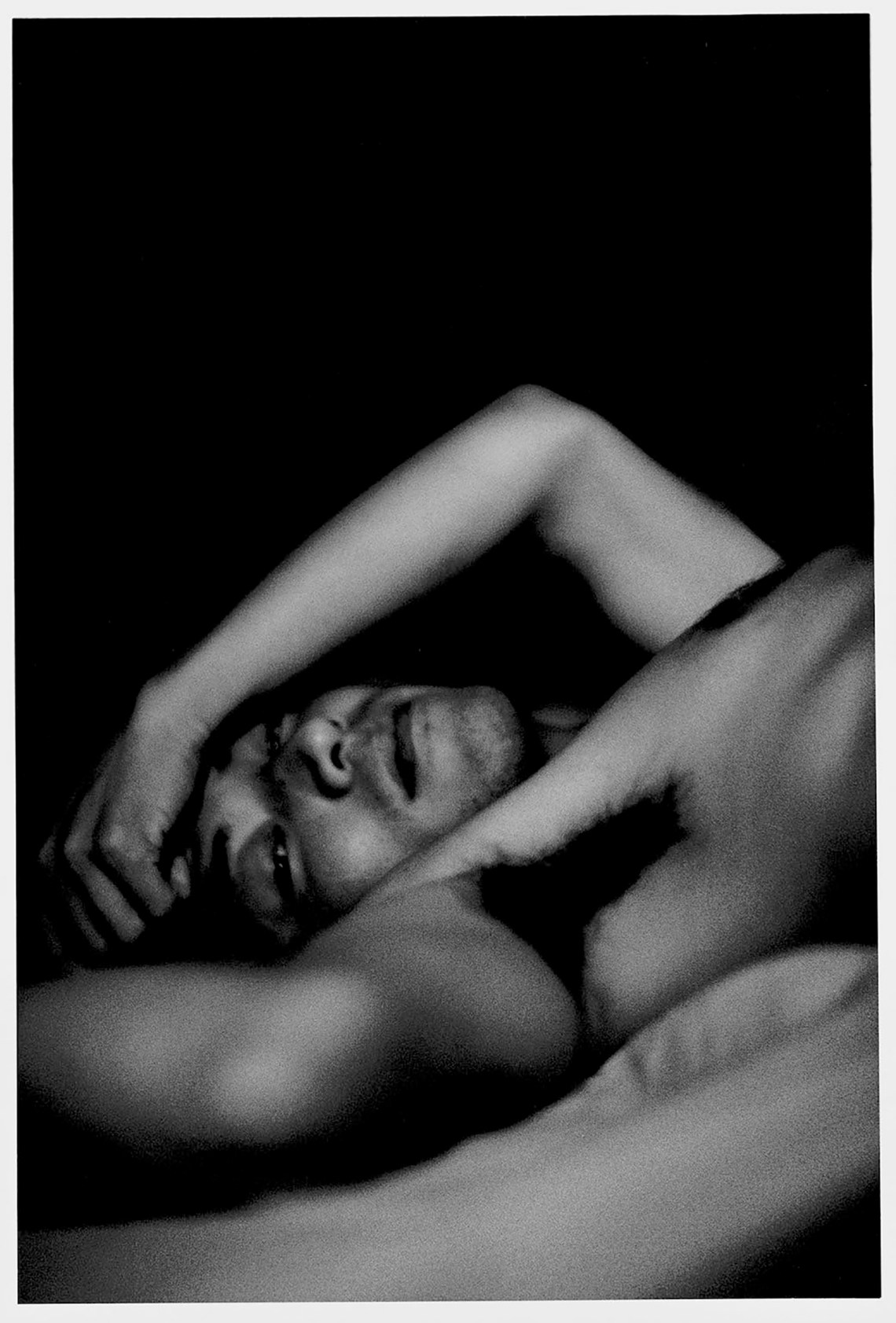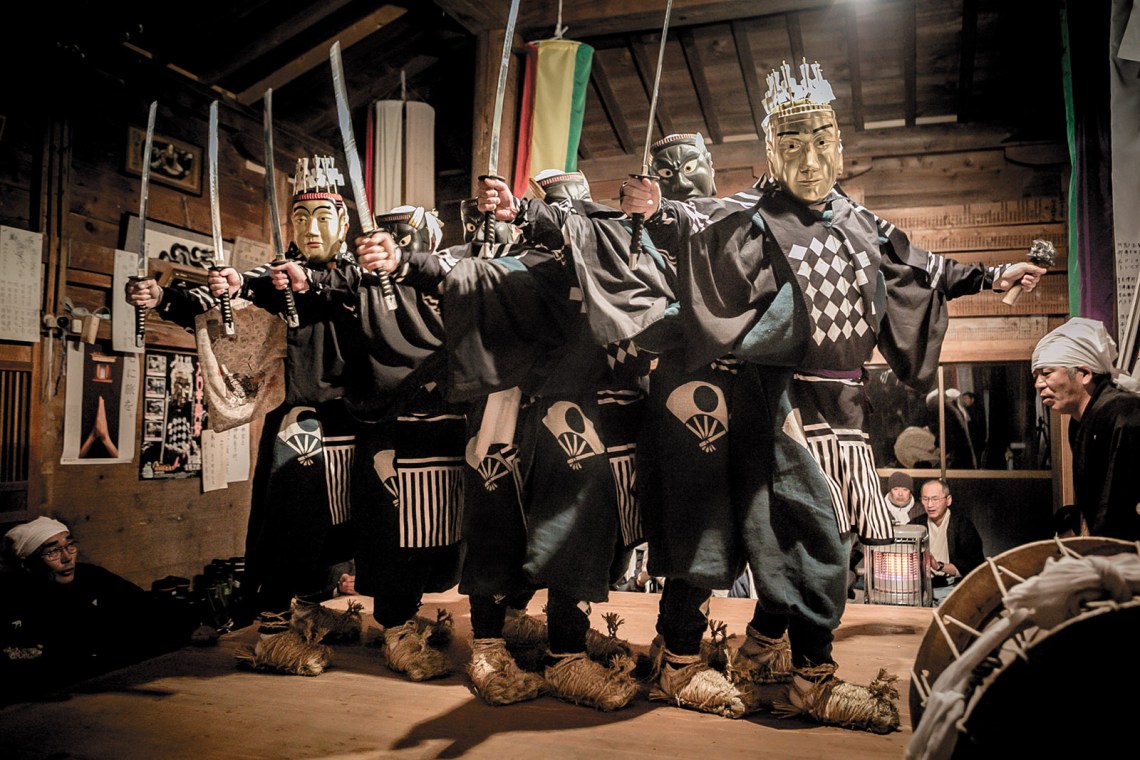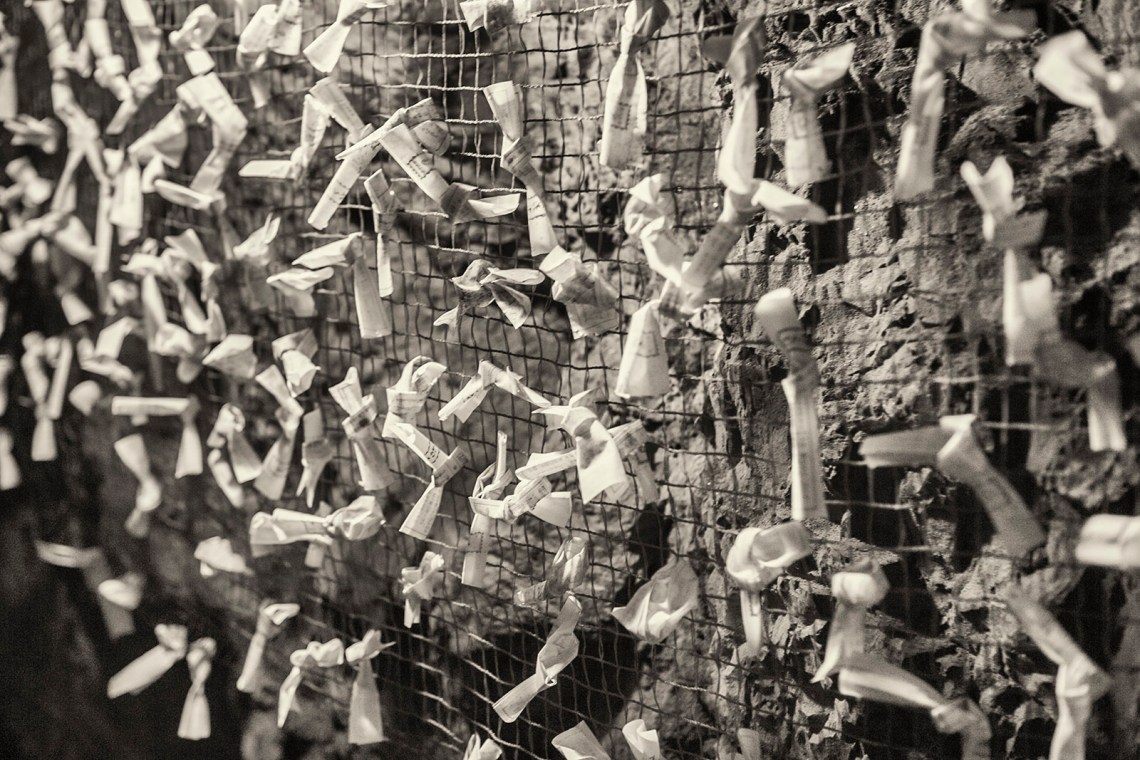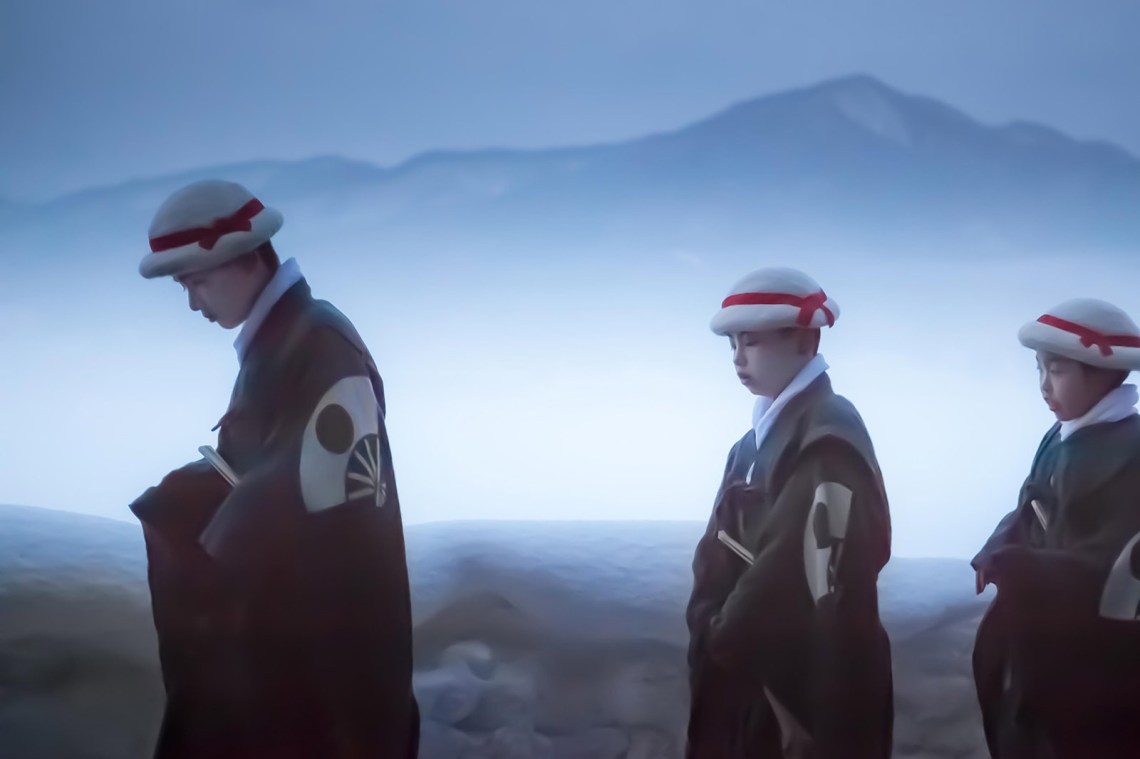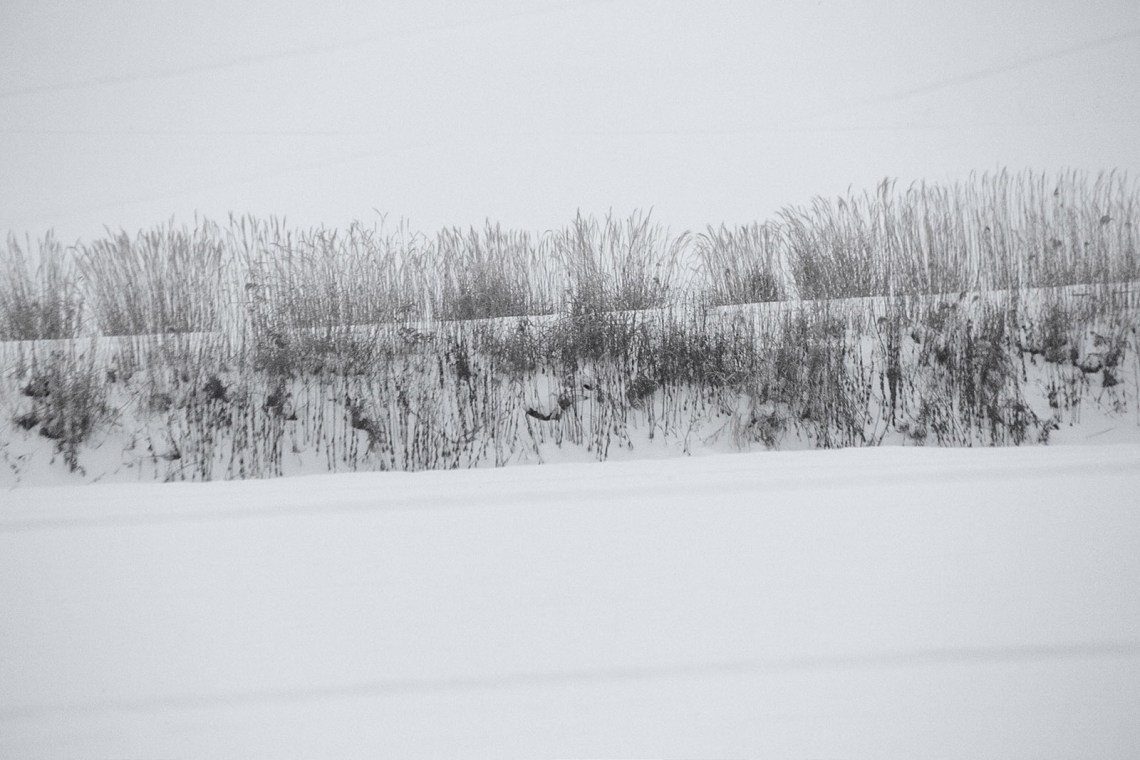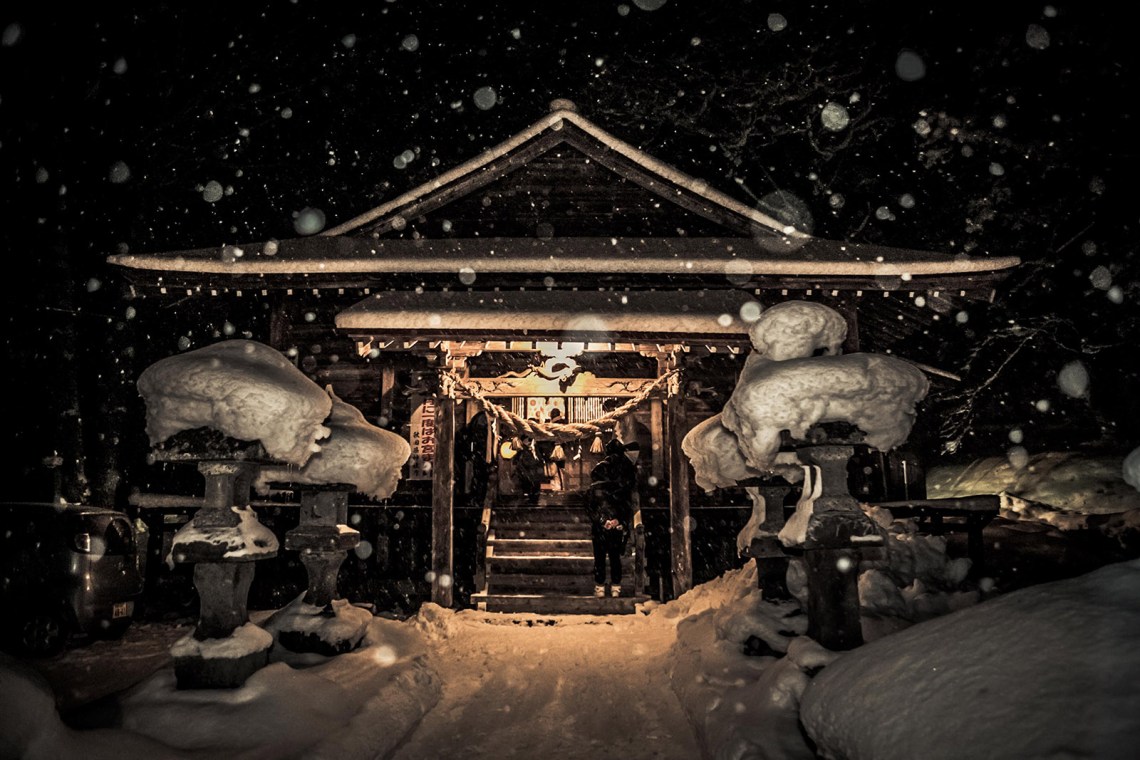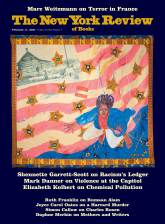Tokyo in the 1960s—shadowy, dazzling, and flooded with life—was photographed without rest. A profusion of Japanese optical companies, many still famous today, were outdoing their Western competitors, and even the city’s grayer, humbler districts had tiny shops whose delicate glass shelves were arrayed with exquisite cameras. In the weekend crowds of Asakusa and Harajuku, every other person seemed to carry one of them. These were the years of the first jubilant flourishing of postwar Japan, life was unfamiliar everywhere, and people were intensely curious. Inspired in each street and station by whirls of images that told them what lipsticks, motorbikes, and televisions to buy, which hot springs and seaside hotels to visit, amateurs filled heavy silk-bound albums with pictures not just of their families, but of steam locomotives, pagodas, flowers, beetles, the shimmering Pacific, and strangers they passed in the rain-wet streets but would never see again.
I was a student at the American School then, and when Friday afternoons set us free, two boys in my circle would spring into the boulevards and alleys, photographing past midnight, until the last trains returned them to their fuming parents. Snubbing their books on Sunday nights, they’d squeeze a rickety enlarger into a bathroom, and on Mondays the rest of us would scrutinize their prints, which seemed to seize our world as heartfully as if they’d rung out the chords for it on an electric guitar. They also showed us books by Henri Cartier-Bresson and André Kertész, and the hugely popular magazines Camera Mainichi and Asahi Camera, which published not only the trite nudes and bamboo forests of professional photographers, but also work by certain bohemian camera-artists of whom most people had never heard. Kikuji Kawada, Shomei Tomatsu, Daido Moriyama, and Masahisa Fukase were some of them, and although I could hardly tell them apart, I was fascinated by their grainy black and searing white, their howling angles and resolute honesty. I somehow knew that they meant to say what Japan really was, and were making cameras, which had once arrived on Western ships, yield a profoundly Japanese poetry.
Beyond this I understood little. I could see how Cartier-Bresson had found in Srinagar and the Palais-Royal the sense of a world marvelously at peace with itself; I could see too how the majesty Ansel Adams saw in Yosemite and the beauty Bruce Davidson encountered in Harlem’s dereliction shone forth in the exhibition John Szarkowski, the Museum of Modern Art’s eminent curator, presented in the American Pavilion of the 1970 Osaka World’s Fair. The most interesting Japanese photographers, though, were anxious and angry; their moments were mostly indecisive, and their carnivalesque characters, A-bomb victims, gutter trash, and shocks of light seemed outlandish if not perverse. Later I’d learn that Szarkowski urged photographers to “say it all in one picture,” but Japanese camera-artists were unafraid to use many. Their favored medium was modest books of minuscule production runs, which few but their admirers knew how to get.
In the 1980s, having become a photographer myself, I often rooted through Jimbocho, Tokyo’s used-book quarter, hoping for a lucky find. The work of the 1960s was mostly forgotten then, but since the 1990s enthusiasts of “photobooks” (as they are now widely called) have maintained that they are almost an art form of their own, and that many of the strongest have been Japanese. First editions of Kawada’s Chizu (Map, 1965) and Tomatsu’s 11:02 Nagasaki (1966)—two of Japan’s most affecting postwar works in any medium—cost thousands now in America and Europe, and many books of their period have been reissued again and again.
The term “photobook” once signified almost any volume in which photographs dominated text; the ones I sought, though, were of a subtype whose images, amplifying one another, were woven into an organic whole. Dense, complex, charged with authorial ambition and dramatic force, they could seem like collages spread over many pages, and made you feel that a photographer was rolling in his subject, not just looking at it. A superb example would reject familiar themes and work up a new poetic idea. Two of the best-loved pictures in Tomatsu’s 1969 Oh! Shinjuku, for instance, came from that year’s violent antiwar protests, which blocked the Yamanote railway and throttled Tokyo, but that book presented less of the news than of Shinjuku’s smoggy, fragrant, and exhilarating air. In one of its spreads, a burst of light on muddy asphalt abuts a jumble of walls and fences, rain pounding a limousine, and a spatter of paint with a hank of rope. What do these nothings mean? a doctrinaire editor could have asked. Eventually, Tomatsu called photography haiku.
Recently, photobooks have prompted a whole shelf of compendia, including Andrew Roth’s The Book of 101 Books, Martin Parr and Gerry Badger’s The Photobook: A History in three volumes, collections of Latin American and Dutch and Chinese work, Ivan Vartanian and Ryuichi Kaneko’s Japanese Photobooks of the 1960s and 1970s, and, drawing heavily on the exemplary libraries of its authors, Manfred Heiting and Kaneko’s The Japanese Photobook, 1912–1990.1 This enormous encyclopedia has rich entries for 511 books, whose countless subjects include the Imperial Navy, kabuki, the atomic bombings, Yukio Mishima, John Lennon and Yoko Ono, and sex both tender and vile. Yet while it is an invaluable map of a territory hundreds of thousands of pages wide, it also shows how unwieldy the notion of the photobook continues to be. The titles I once sought in Jimbocho are but one thread in its complicated fabric, and Heiting and Kaneko only partially explain what so distinguishes Nagasaki and Chizu, Moriyama’s best books, Fukase’s Karasu (Ravens), and many exceptional titles published since 2000, many of them by women.
Advertisement
Almost everywhere in the world, photographers of artistic intent work for both wall and page, but while the westerners have long aimed for museums, the Japanese have largely preferred to publish. Why has a culture of the photobook arisen so energetically in Japan? The usual account begins with architecture. Their walls being made, in general, of sliding paper screens, most older Japanese houses have scant space for pictures that are not part of transoms or doors, and collectors of art, unable to display their holdings, have instead filled closets and vaults, from which a prized pot or picture will be retrieved for just one afternoon’s enjoyment. There are also certain continuities between Japan’s premodern arts and its photography. Ink-painters and calligraphers, for example, have long loved the delicacy of paper and the force a hand’s movements upon it can have, recorded in ink, while ukiyo-e printmakers reveled like photographers in such molecules of life as the narrowed eye and the gnarled foot.
Except with screens, Japanese artists have mostly foregone monumentality, and made fragility and transience virtues of their work, which can be unrolled on tables, bound as volumes, or—where it hangs on a wall—replaced when the old calendar of seventy-two seasons says that the fortnight of Rain Water has passed into that of the Insects’ Awakening. Young, still unexhibited photographers can issue books in just five hundred fleeting copies, leading one to think of the itinerant poets of old, who, trudging the backcountry, left verses affixed to lonely temples and farmhouses, perhaps to blow away unread. A long career may mean an overwhelming bibliography, like Moriyama’s, with over a hundred titles, and Nobuyoshi Araki’s, with more than five hundred.
Has Japan’s keenness for bookmaking fostered particular kinds of picture-making? Heiting and Kaneko begin with two 1912 albums dedicated to the Meiji Emperor’s funeral, handsome but composed of images that, like most early Japanese photography, are simple and styleless. By 1914, though, barely into the Taisho years, romantic photographers were emulating Euro-American pictorialism, and a decade later their harder-headed successors looked for guidance to the Neue Sachlichkeit and the Soviet avant-garde. Nevertheless, while August Sander and Walker Evans were both at work during Taisho, their Japanese counterparts showed little interest in inquisitorial clarity. They preferred, rather, to split graphic elaboration off from apparent subject, much as one finds throughout the traditional Japanese arts (the calligraphed characters in “grass writing,” for example, are nearly unreadable, yet still suggest rain falling from eaves, tears down a face).
Japanese photographers were eager quite early, then, to trade description for expression. Even Front, a sumptuous picture-gazette that, in the 1940s, extolled the army and navy, showed less of their exploits than of their beauty. With one image from 1943, of a blue expanse strewn with luminous discs, you only slowly understand that these are not a shower of blossoms, or pearls on silk, but parachutes, a company of stormtroopers descending on your head. Front often montaged vividly tinted objects of incongruous sizes, as in issue 14 (1944), where four vermilion airmen appear against a field of black bombers. Does vermilion represent the men’s ardor, black the menace of the planes? Such thoughts shrivel beside the splendor of those colors. The Japanese photography of the 1960s was so strong that many people still assume it to have been sui generis, but it was actually anticipated by Front and modernist journals as old as the melancholy Hakuyo.2
After 1945 Japanese photography was led for over a decade by empathetic reportage in the manner of Life magazine, Look, and the pre-war French VU . Such earnest storytelling played one part in the general postwar mission to return Japan from ostracism to international acceptance, but while many fine pictures were made at this time by photographers like Hiroshi Hamaya, Shigeichi Nagano, Ihei Kimura, and others, they feel blandly conservative now. In contrast, the photographers who followed them had grown up amid the fire-bombings, begged through the Americans’ fences for chocolate and gum, and as adults spurned both wartime nationalism and the kind of wholesomeness one found in MoMA’s celebrated project “The Family of Man” (1955), which saw people everywhere as likeminded (and won a huge Japanese audience). Its wide-eyed humanism was itself a response to the horrors of the war, but in Japan, younger photographers answered it with furtive glimpses, raw light, and adamant distrust.3
Advertisement
Kawada’s and Tomatsu’s first substantial books both addressed the atomic bombings, a natural subject for journalism, but rejected journalism’s sentiments and language for a torrent of images with flexible meanings. They are still astonishing today. In Nagasaki, whose strident black-and-white mimics the flash of the detonation, crooked alleys, American bluejackets, ghastly keloids, and relics like a helmet with a shard of skull fused into it by the bomb’s heat are presented as pieces of a shattered world. Little destruction was still openly visible in Nagasaki when Tomatsu got there in 1960, however, and he had to cobble most of his book together from decontextualized bits of the rebuilt city, which made its unhealed wound seem less physical than psychic, and possibly beyond repair. Kawada started the enigmatic, dirgelike Chizu (a map of no actual place, despite its name) with the Hiroshima dome building’s stained inner walls, as illegible as faded star charts, then worked in a trampled rising-sun flag and the mementos of several late boy-faced suicide pilots, where the lost war’s emotions sadly persist.
Although neither volume offered much of how the world of its moment really looked, each said a lot about how even broken, incomplete memory can refuse to die. It is crucial that both were books before they were shows. On walls, the gaps between pictures stress their singularity, but in a well-worked-out photobook each image signals to others, issues are developed, and changes of direction have meaning. At one point in Chizu, Hiroshima’s blasted oculus splits into gatefolds that reveal six thrown-out bottlecaps alongside the emperor’s majestic chrysanthemum crest. This triad of images speaks grimly of physical ruin versus spiritual beauty, death and destruction versus enduring nobility, and reality versus delusion, with the nervous oscillation among them central to the effect. None says it all in one picture (as Szarkowski advised), but after pages of haunted searching, the correspondence Kawada finds among wreckage, refuse, and hallowed petals seems a revelation.
There was but a little way from these books to the short-lived journal Provoke (1968–1969), which appeared just three times but has given its name to both a sensibility and an era. In it, Moriyama (Tomatsu’s intrepid protégé, who in time became a preeminent artist of the postwar age), Takuma Nakahira, and Yutaka Takanashi took photography to a drastic pitch, using a fingernails-on-chalkboard style that came to be called Are-Bure-Boke—grainy/blurry/out-of-focus. With its clotted darkness and afflicting light, ABB denounced an Alphavillean world that looked as bleak as if we were seeing through the eyes of the tortured hero of Kenzaburo Oe’s 1964 novel, A Personal Matter.4 Provoke sharply expressed a sense of national anguish, and early ABB is full of dismal highways and hoardings, grotesque passersby, lurid night-towns outside American bases, and, shining under the streetlights, protesters’ helmets and the armor of the riot police.
The photographers of Kawada’s, Tomatsu’s, and Moriyama’s circles were in fact attached, in sentiment if not actively, to the Japanese student left, which was less romantic than its Western cousins and meant mainly to protest the US military bases in Japan, the war in Vietnam, and what it assailed as Americanization. It included a strong current of national feeling, though without the bellicosity of the war years, and when Kawada and Tomatsu’s cohort fled news magazine humanism for visual extremity, they were also quitting an international style for a native one. Photojournalism came from the West, Tomatsu told me later, while he’d looked to Japan, and in likening photographs to haiku, he came close to calling them essentially Japanese. This was certainly extravagant, yet whatever ABB got from William Klein and Robert Frank (to whom it is often linked), it owes no less to the thundering black-on-white of Hakuin, the illustrious Zen inkist of the 1700s, even if his work shows little of ABB’s torment.
Kawada and Tomatsu were acclaimed for photographing from the heart, not just the head, for moving fluidly between grave historical and moral matters and the extremely personal, and they were given a lot of space by the big camera magazines, especially Mainichi under Shoji Yamagishi’s brave editorship. Yet Tomatsu was also accused of self-indulgence, Kawada of obscurantism, and even before their sub-subculture reached any consensus about how much personalism was too much, the 1970s’ strongest photographers went nearly hermetic. Nakahira called his first book For a Language to Come (1970), at a time when Western photographers still professed straightforward themes. (Although Frank’s The Americans (1958) cut loose from conventional ideas of what America was, it was still about America; Garry Winogrand’s The Animals (1969) concerned zoo creatures, even if it stretched them into metaphor; and Lee Friedlander’s Self Portrait (1970) contained self-portraits, however uncommon they were.)
Moriyama’s Kariudo (Hunter, 1972) conclusively moved the emphasis from subject onto viewer; the hunter there was Moriyama himself, his sensibility the point, and in the late 1970s and 1980s his subjects looked ever more like they came from inauspicious dreams. To his demented fat boy and his famous, whipped yet still predacious mongrel, he would add a payphone heavy with the call one hasn’t made, the opaline parings of ten feminine fingernails, and a white fedora that could make a yakuza seem a movie star. In Shashinyo Sayonara (1972), he fully repudiated the definite subject. You often wonder, on its scratchy, cacophonous pages, if you are seeing naked skin, a swoosh in the crowd, or just blotches on a ruined negative.
“Shashinyo Sayonara” translates as “Goodbye, Photography,” but with the suffix –yo adding a strain of regret and disgust, as if one were saying both “Photography, Farewell,” and “Photography, Good Riddance.” Spilling itself out furiously the book announces, All that cameras can say has been said—enough!, and when I turned up a copy in Jimbocho in 1984 I put it back on the shelf, feeling that the Japanese work I’d found so wonderful might have reached the end of its road. There were others who, for their own reasons, felt the same way. Heiting writes that imagination died in the Japanese photobook in the late 1970s, that the photographers lost their courage. Calling this “tragic,” he blames Szarkowski, and though his complaint is dubious, it reveals much.
Not long after Expo ’70, Szarkowski and Yamagishi put up a large survey at the Museum of Modern Art, “New Japanese Photography.” That so lofty an American institution appreciated Japanese camerawork made a great impression in Japan, and Szarkowski acquired an outsize influence there. Yet while Szarkowski noted that bookmaking had shaped Japanese photographers, Heiting says, he argued that a good picture must stand alone. He also told them that a photograph should have a white border around the image, and although this seems trivial now, American camera-artists of that time were fiercely averse to bleeding an image off the edges of a page or a print (a reverent margin said it was art, they held, where bleeds, which magazines used, meant journalism).
This was of course to dismiss the collage-like books at which Japanese photographers excelled, and Heiting accuses Szarkowski of urging them to Americanize: “The uniqueness of Japanese vision in the photobook disintegrated and never again revived. It became Eastern art for Western taste.” One doubts that any single critic’s comments could make hundreds of Japanese photographers abandon their path, but Heiting writes bitterly that they “bowed” to their American patron, “surrendered” their distinct, national voice, and moved to conform with a homogeneous, international style.
In fact, the personalism of Moriyama and his allies traveled much farther. Japanese photography never turned American, either—Sayonara had found a contemporary form for Japan’s age-old love of inexplicit statement, and one could hardly comprehend some of what soon followed without a feeling for esoterica like Noh, snakemen, tattoos, and kimono patterns. Issei Suda’s Fushi Kaden (1978) cared nothing for Hiroshima and Shinjuku, and quit not just political themes but visual extremity too. Suda had begun as a photographer with Shuji Terayama’s avant-garde theater, which often synthesized from traditional sources, and he perceived in the modern world many emanations of a mysterious past. His pictures declare (of an androgynous, faintly freakish girl) Here is a perfect child, and of a stately hand-carved shop sign (the prime ideogram in “family,” or, at the end of a word, “maker,” the designator of an artist; see illustration above) Here is the character 家!, never suggesting why they matter. When he put a man flinging back his head beside a cheap curtain billowing from a window, he threw out who and where, but made material a grayish kind of hope.5 A stern rationalist might call this incoherent, yet it wasn’t far from haiku, for example Natsume Soseki’s austere “Karasu Tonde,” in which flown-off crow, westering sun, and leafless tree together evoke a month, a season, a whole year of regret.
Japan’s finest photobook thus far may well be Fukase’s Karasu (Ravens, 1986—called The Solitude of Ravens in some English editions). Although it shows them in glittery-eyed armadas, crows as such are not the book’s theme but a recurrent, symbolical motif that knits together its other interests, which include a brawny alley cat, a flabby odalisque (possibly a hot spring masseuse), schoolgirls’ hair thrashing in the sun, and a power shovel emptying tulips onto a dump. Karasu makes a lonely winterreise in the far north, finding black memory and foreboding in every bird but never hinting that this journey began when Fukase’s wife left him. It is all objective correlative: ordinary streets and skies that breathe bereavement; hopeless longing; joy found, then lost again. Japan’s best photobooks of the 1960s and 1970s all meet in it. It has their grain, blur, deep blacks, their paltry but eloquent objects. It has obsession, the hallucinatory, and their conviction that the degraded and deplorable can still open up with epiphanic beauty.
Westerners have long appreciated the fragmentary nature of East Asian verses and pictures, and when Simon Leys wrote that “a Chinese poem is not articulated upon a continuous, discursive thread, but…flashes discontinuous series of images,” this covered the strongest Japanese photography too. Books may indeed have been so important to it because they are naturally friendly to pictures that are fractional to begin with and, by interweaving them, can unlock and augment their meanings. A photobook’s basic attribute is that its component images are bound together yet can be endlessly reordered, and an author’s first question when assembling one is how to make clear what connects them. That our disparate world may be hung along a thread of feeling was one of Kawada’s and Tomatsu’s prime discoveries; authors who do this well can play without restraint among subjects that, ordinarily, have little relevance to one another.
A superb photobook can sprawl like life, then, and even when serious photographers sequence their images meticulously, readers still flip through them, recombining them at will. Looking at a photobook is thus more participatory than reading a text or looking at a painting, and a bit like following one’s intuition down one and then another of the alleys of an old city. The enthusiasm for books that encourage readers to do this hasn’t been lost in Japan at all, and it may be that what grieved Heiting wasn’t really an absolute decline of its photobook culture but the waning of the fervid Kawada-Tomatsu-Provoke era.
For two decades now, Japanese photobooks have left ABB’s distress far behind, and while its heroes were largely male, women have done much of the strongest recent work, retaining ABB’s personalism but ignoring most of its other qualities. With infinite gentleness, Rinko Kawauchi’s first book, Utatane (Daydream, 2001), travels from spoonful of roe to imploring mice to dead wasp, as if it were following a child’s treasure map. What if, it asks, I awoke from years of sleep and saw again as an innocent?… And doesn’t the blue sky tip, at some hour at the height of spring, toward palest yellow?… And how can I not heed the golden, evanescent specks that float upon the air? Her recent Halo (2017) offers fleets of birds, torrents of sparks, shoals of stars. Such were never ABB’s subjects, but ABB made them possible.6
And then there is Half Awake and Half Asleep in the Water (2007), all of whose images Asako Narahashi made while floating in the sea (or sometimes a lake). Each one shows luminous murk below the horizon, with the human world (drab Fukuoka; the garish ersatz sea gate near Hamamatsu) quivering phantasmally above. Though this structure is rigid, it lets Narahashi build up an anxious sense of foundering and engulfment, and reassert Kawada’s idea that what is frightening can be beautiful. Half Awake is just one recent Japanese photobook that seems acutely aware of its precursors. In the joyless bedrooms of Sakiko Nomura’s Kuroyami (Black Darkness, 2008), a reader who knows Chizu will soon recognize its gloom over the failed war lingering at the edges of her gloom over miscarried love.
In Tokyo now, Yumi Goto’s studio-school and press, Reminders Photography Stronghold,7 works to extend what has become a century-old tradition by combining artistically intentional, casual, and anonymous pictures with incongruous materials, bindings, and page formats, and willfully merging today with yesterday. Each year, Reminders brings to publication one outstanding project from its “Photobook as Object Workshop,” and in The Restoration Will (2017) Mayumi Suzuki mourns the loss of her parents in the tsunami of 2011, putting cheerful scenes from her childhood beside rotting portraits saved from the muck and caliginous images of her own. Jumping from monochrome to color, large scale to small, regular to unfolding pages, pristine to damaged paper, machine- to handcraft, clear to illegible, and chronicle to fantasy, the book cries of her yearning to see the disaster herself (she was away when her town was destroyed) and bring her parents back. It culminates with one piteous, six-leaved, fabricated panorama, where Suzuki goes beneath the sea and finds her mother and father still, impossibly, alive, and gazing uncertainly through its stormy, radioactive blue (see illustration at beginning of article).
Yukari Chikura’s Zaido (2020) was also prompted by grief when, after the death of her father, he told her in a dream to visit an obscure northern hamlet where he’d once lived. She found performed there an ancient ritual, the “Godaison-mai,” that includes a silent chant whose words no one knows (their sole keeper perished, no one remembers when, before he could hand them down). In some places Chikura uses denatured photographs that look like watercolors, in another crows much like Fukase’s, and she fills one large image with a swarm of omikuji—the folded, ribbonlike fortune-tissues people buy at shrines and temples and tie to twigs and wires, hoping that the “Moderate Luck” or the “Great Curse” they predict will or will not come to be. A real omikuji has been attached by hand to this photograph’s page in every single copy of Chikura’s book, challenging the reader to unfold it—or, perhaps, to leave it intact and forfeit knowing the future. At Zaido’s climax, six snow-booted shamans raise their naked swords and dance in monstrous black and golden masks. Merely to show us pictures of some exotic place would never have been enough, Chikura makes it clear; she could only have wanted to lead you through a secret fissure to an unimagined world, and put its ice, its strangeness, and its barbaric divinity right onto your skin.
Photography has little obvious precedent for such adventurous work. Indirectly, though, Suzuki and Chikura both look back to that moment sixty years ago when Japan’s cities burgeoned as no one had seen for decades, and its prodigious camera magazines sought not to stand you at attention, as museums do, but to bring you into a rich bazaar. Tomatsu expressed their spirit perfectly when he wrote in 1969:
If I could, I would want to see everything: the affairs of others, the scene of a murder, the pygmies in the African rain forest, the super-rich of Wall Street, the face of the man who stole three hundred million yen, the Sydney Opera House, the graveyard of ships in the Sargasso Sea, the tail of an orca, the plankton of the deep ocean, the inside of Prime Minister Sato’s belly, Mao Zedong, Mars, Cape Kennedy, Antarctic blizzards, the animal whose name is “sloth,” the pudendum of Marilyn Monroe. My eyes are infamously greedy.
What he aspired to has persisted in many and unexpected forms, and it cannot be said that Japanese photographers have given in to any kind of conformity. In truth, few photographers anywhere have shown so much freedom.
-
1
Heiting’s collection of Japanese photobooks, the largest in private hands and possibly the largest anywhere, was destroyed by the Malibu wildfire of 2018. It may be that some were unique and can now be seen only in The Japanese Photobook, and only in part. ↩
-
2
Fuchikami Hakuyo published his eponymous journal from 1922 until 1926. In his essay “I Want Art to Speak,” he wrote, “[to bring] vitality to the mute, slumbering photograph, I want to…make it poetic and musical.” Hakuyo straddled pictorialism and modernism, but its strongest photographs (often Hakuyo’s own) were modernist, and among the most graphically expressive that had yet been made in Japan. ↩
-
3
Certain prominent photographers of the 1950s had in fact supported the militarist government of the 1930s and 1940s; both Hamaya and Kimura, for example, worked for Front. This may have brought some of them, after a change of heart, to turn enthusiastically toward the internationalism and humanism of the early postwar period. However, these very convictions may have bred resentment among Kawada, Tomatsu, and their young companions. ↩
-
4
In A Personal Matter, the main character disappears on a debauched, nightmarish walkabout after his son has been born with his brain partly outside his skull. ↩
-
5
Similarly unexpected combinations of photographs appear throughout Suda’s posthumous 78, which consists entirely of previously unpublished work, and in many of his earlier books, for example Ningen no Kioku (Human Memory, 1996). ↩
-
6
In September, Aperture will publish a new edition of Kawauchi’s Illuminance (2011), in which some of the photographs look back toward Utatane and others forward to Halo. ↩
-
7
Reminders’ odd name, perhaps skewed in translation, expresses the idea that photographs can save the past from oblivion; it makes perfect sense if one thinks “Memory Fortress.” ↩


